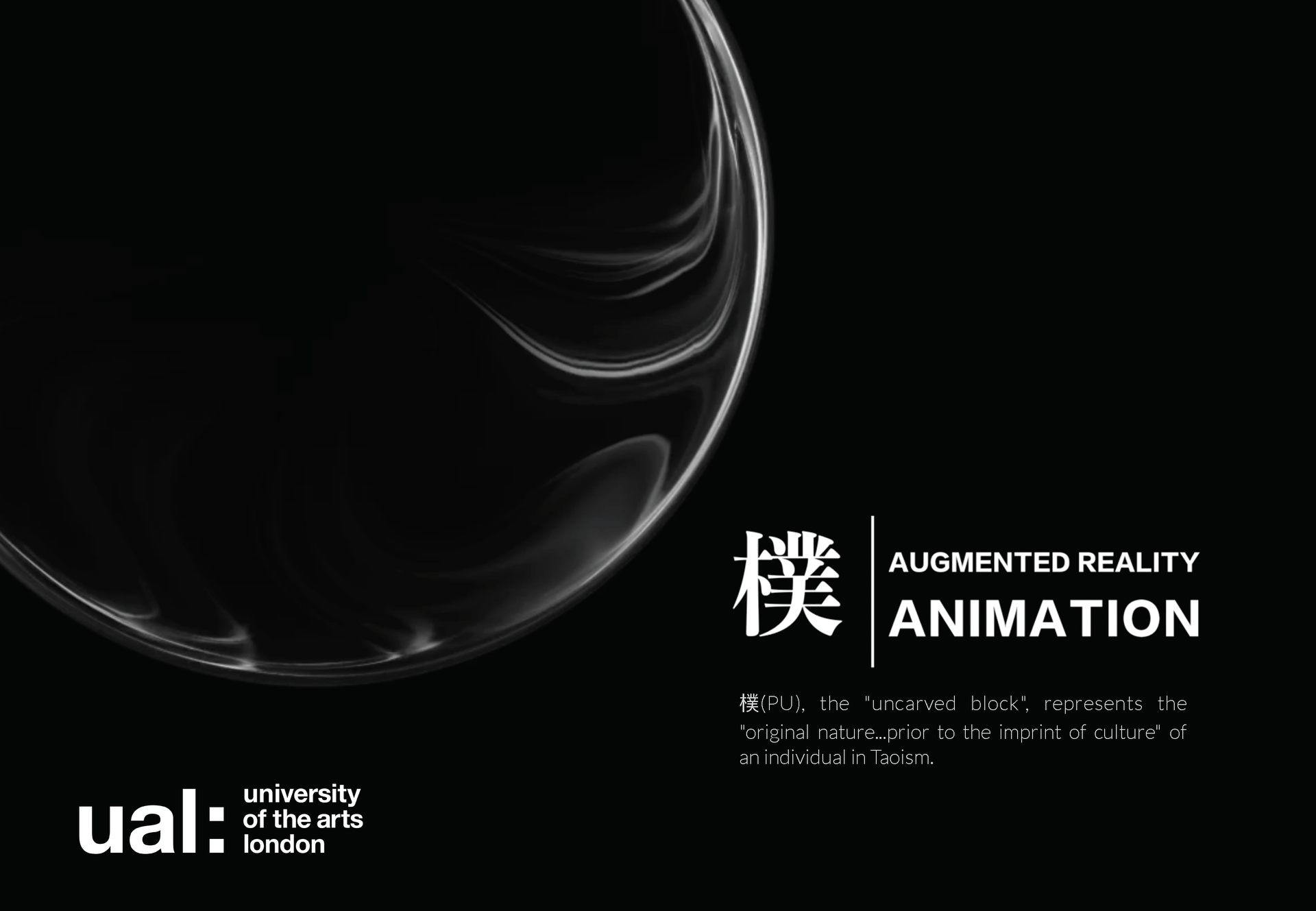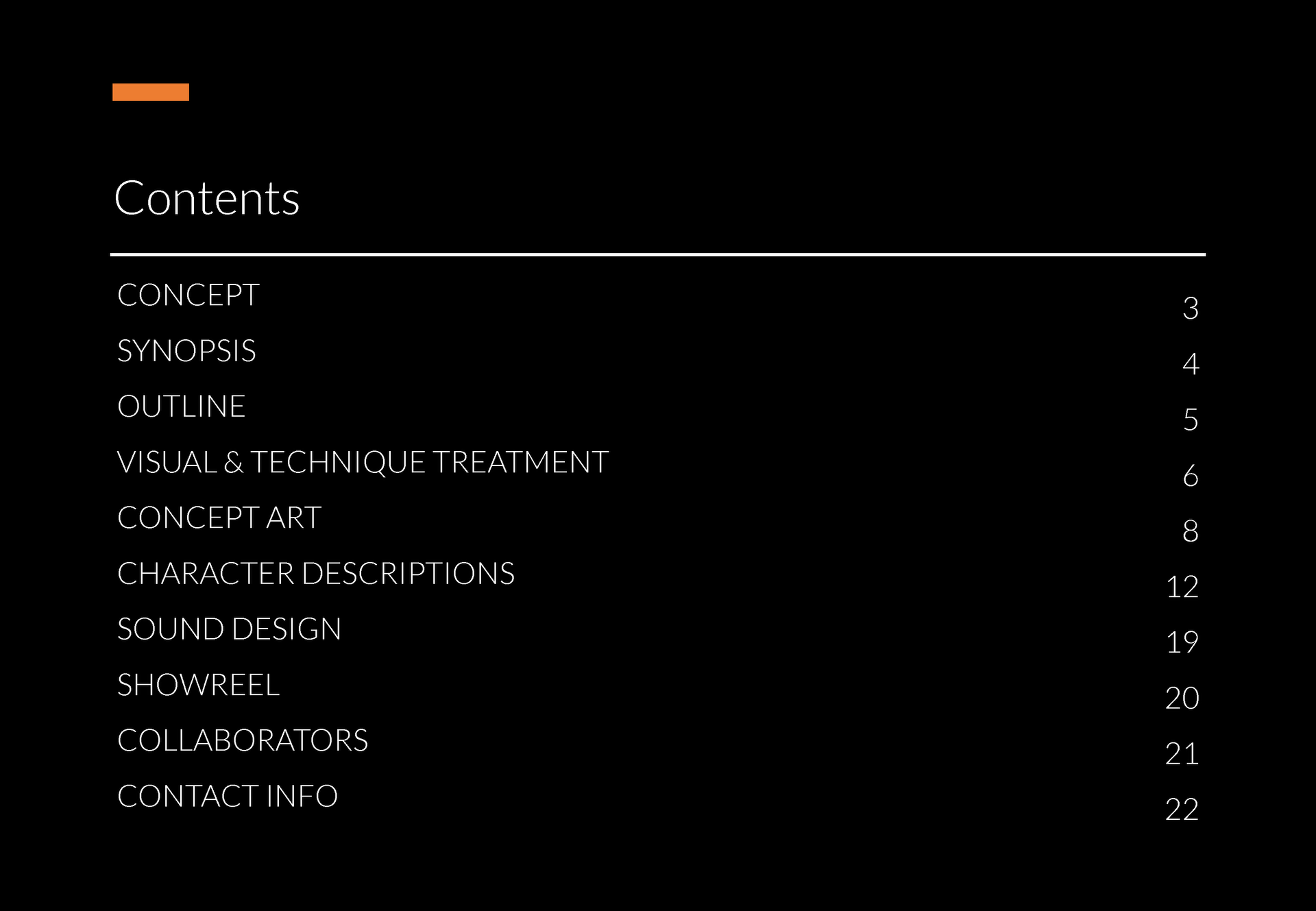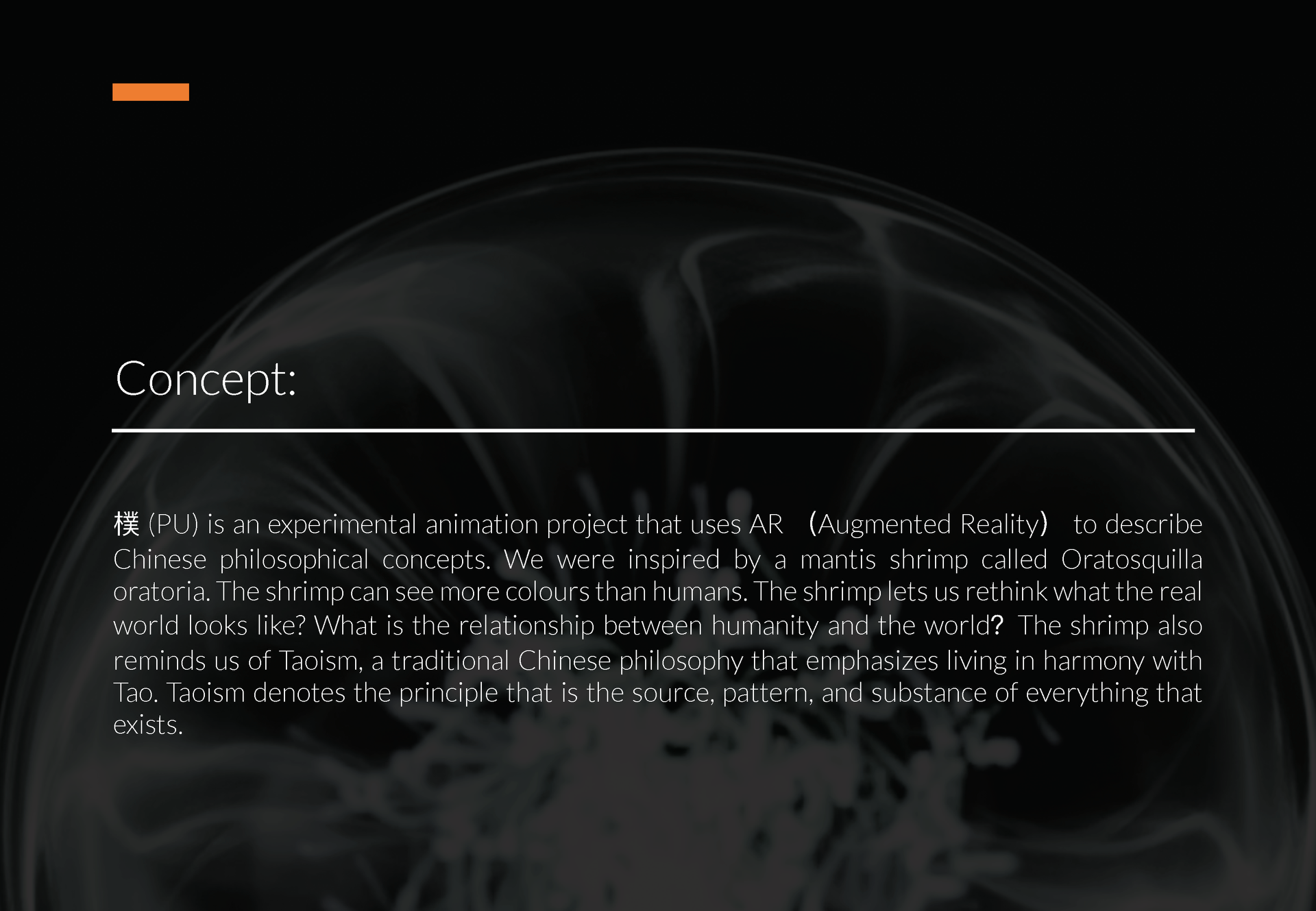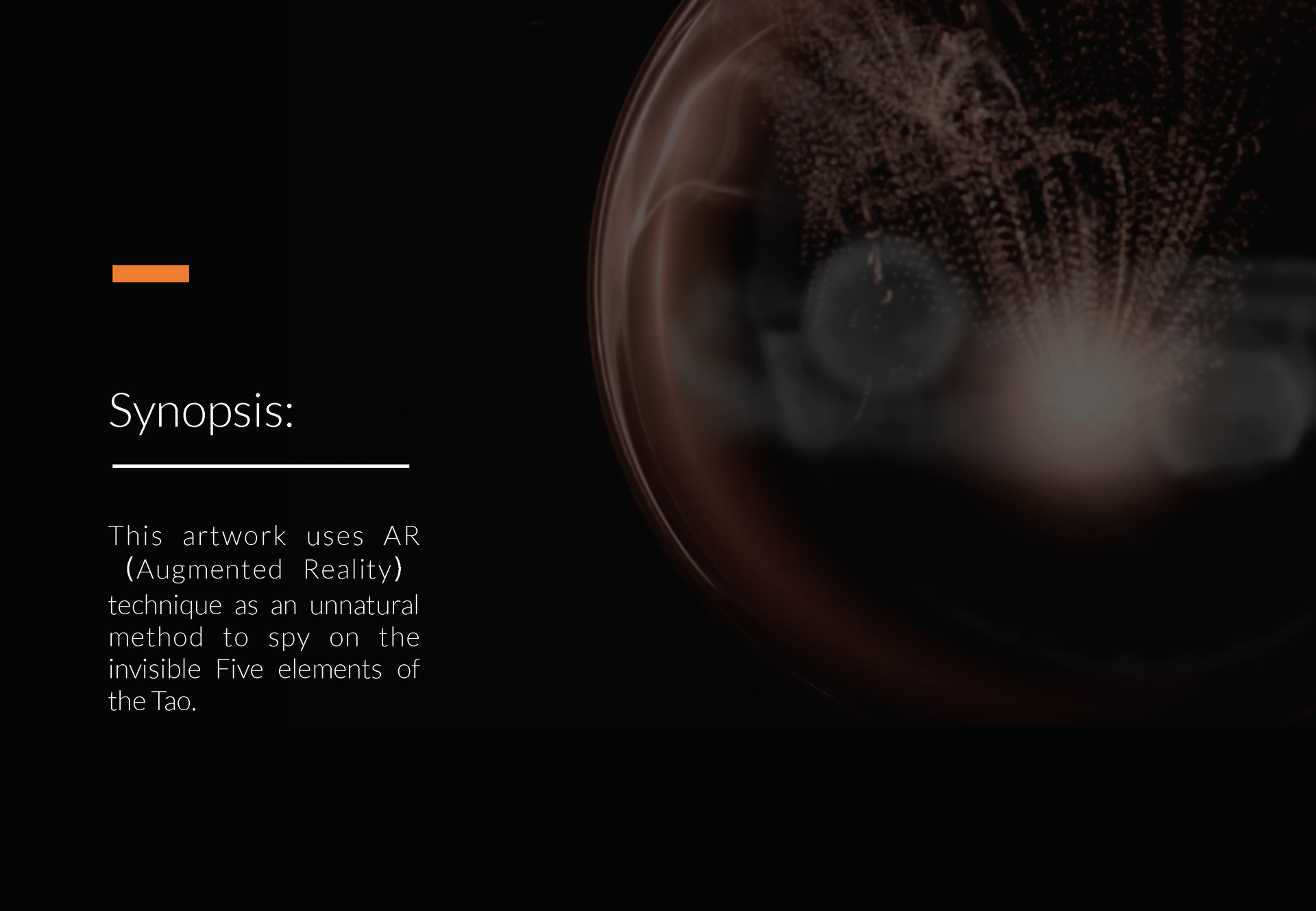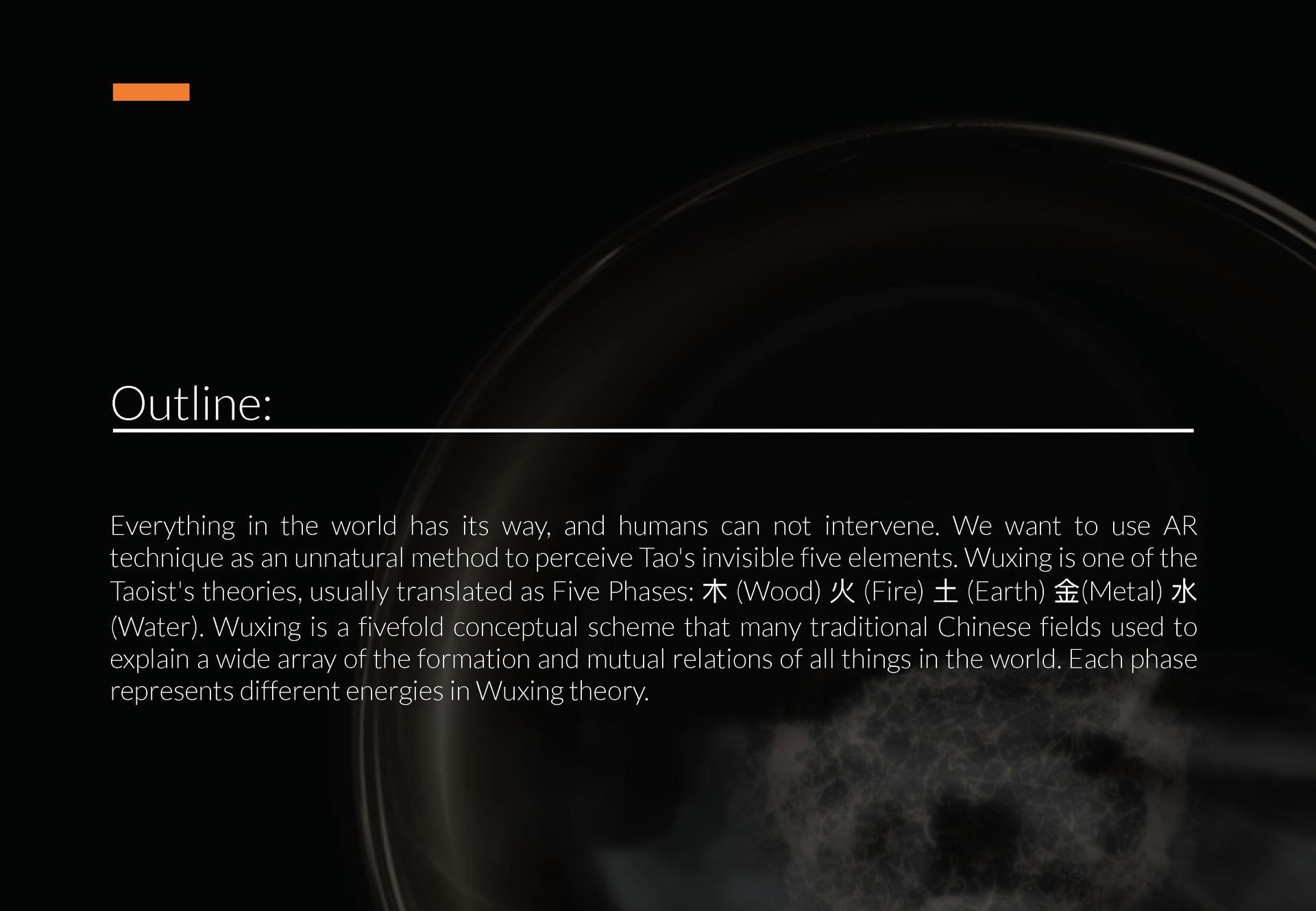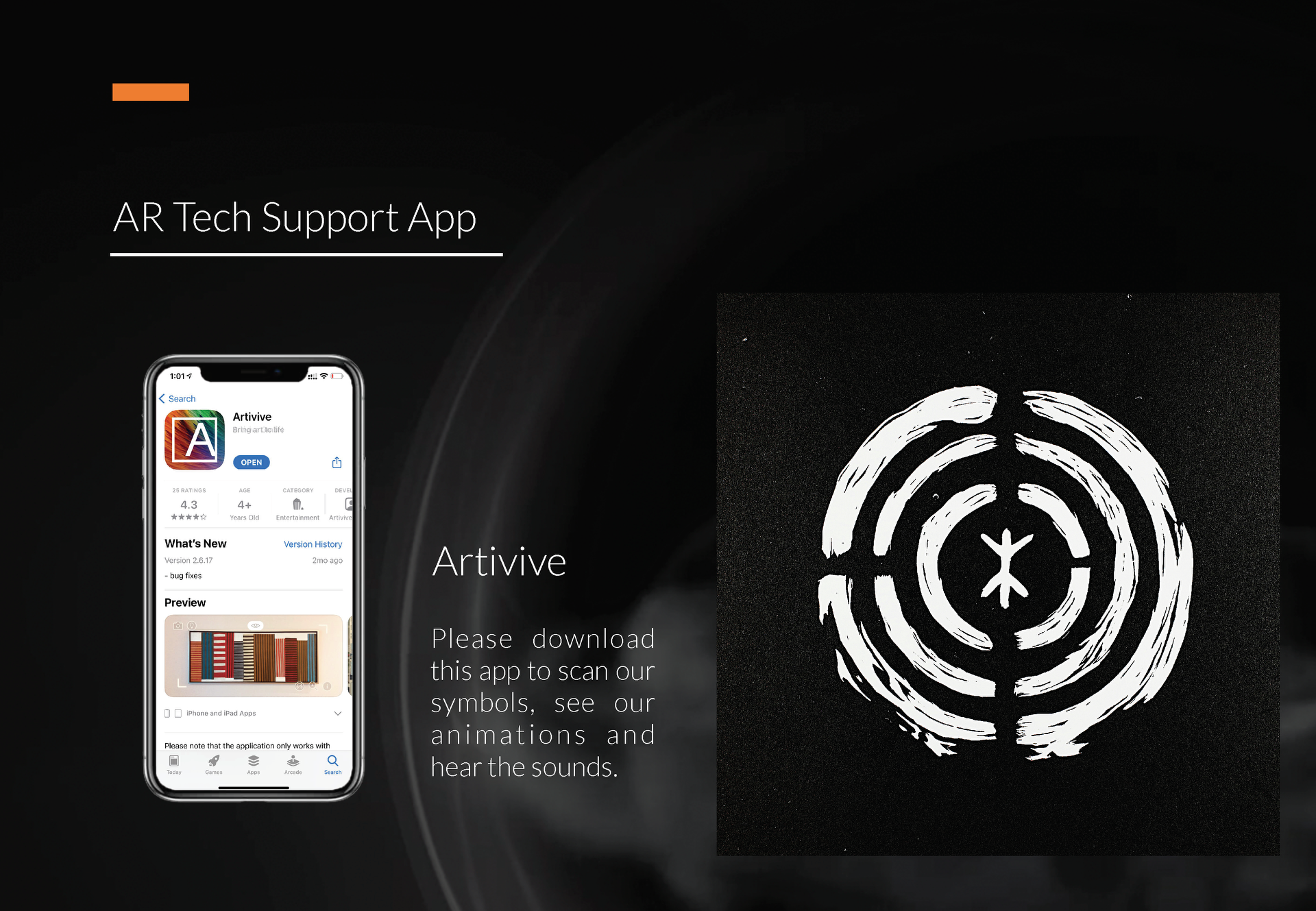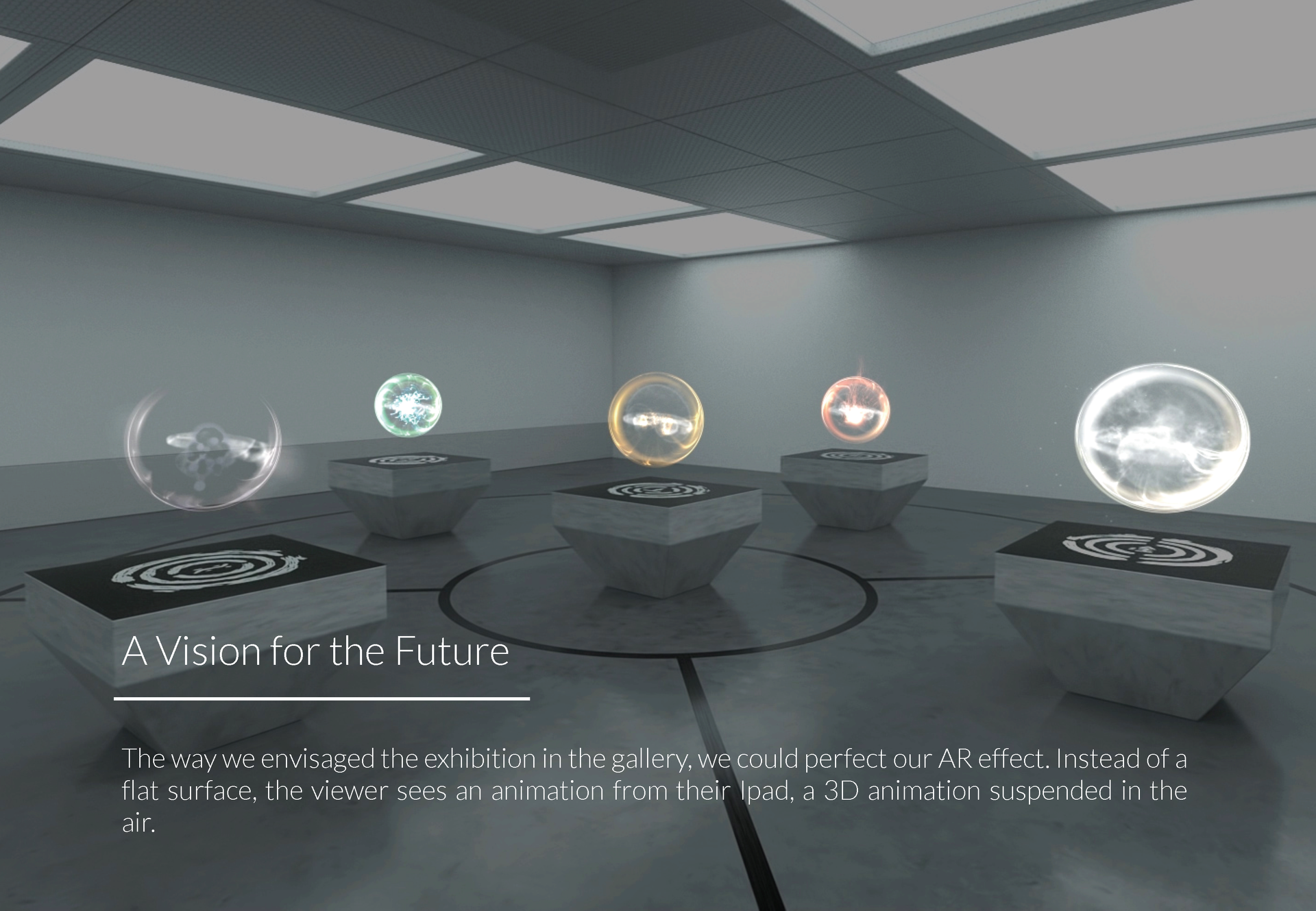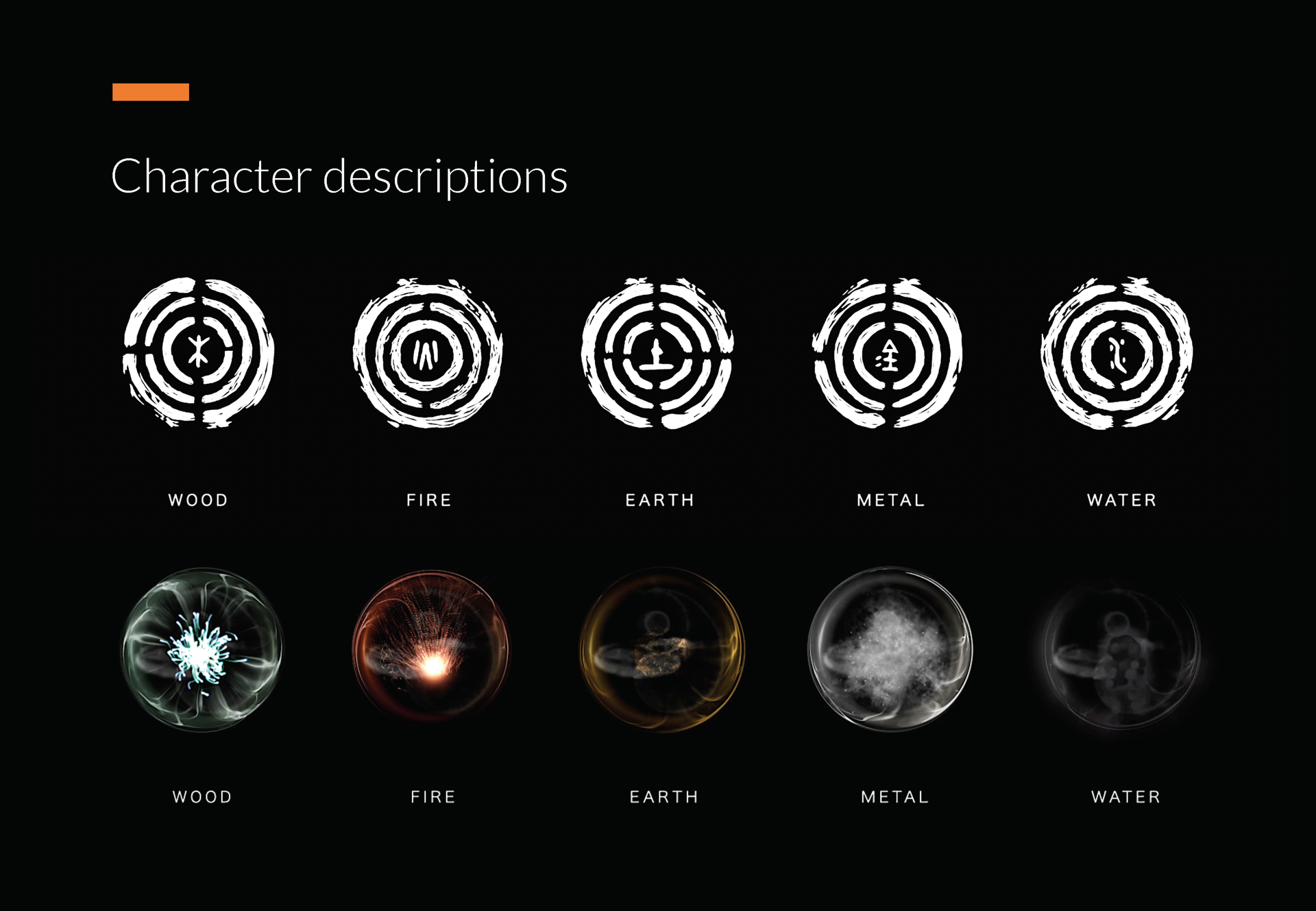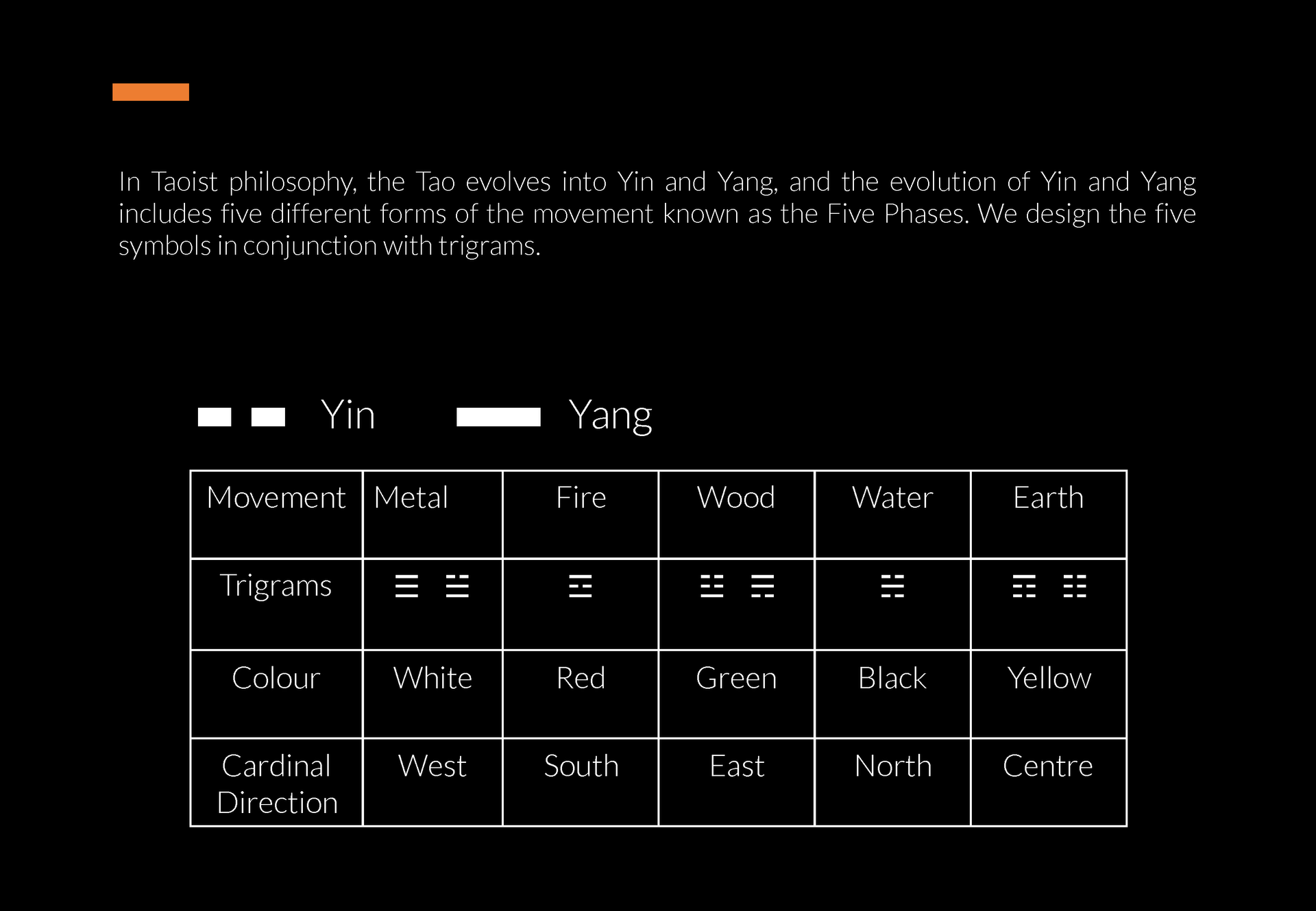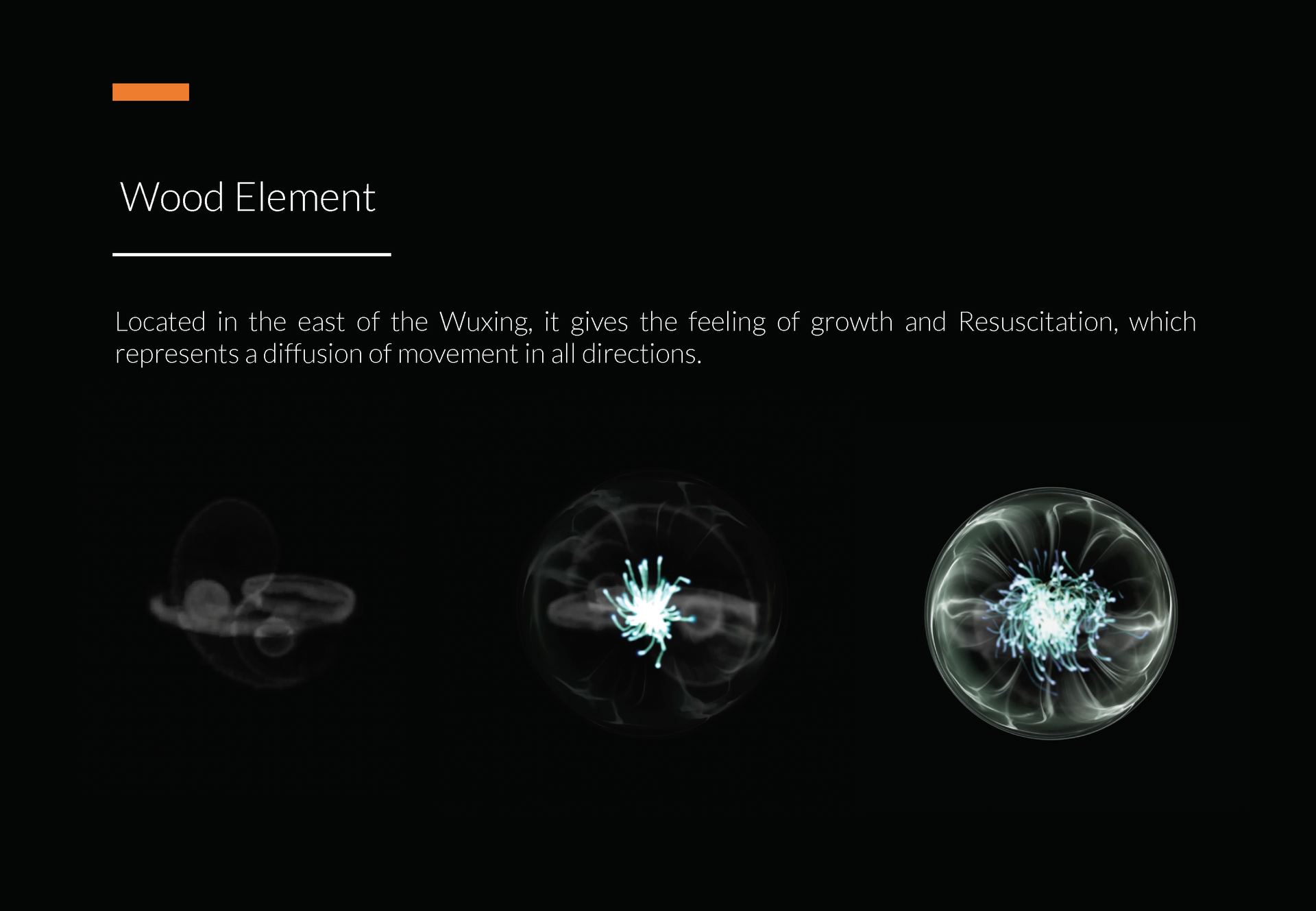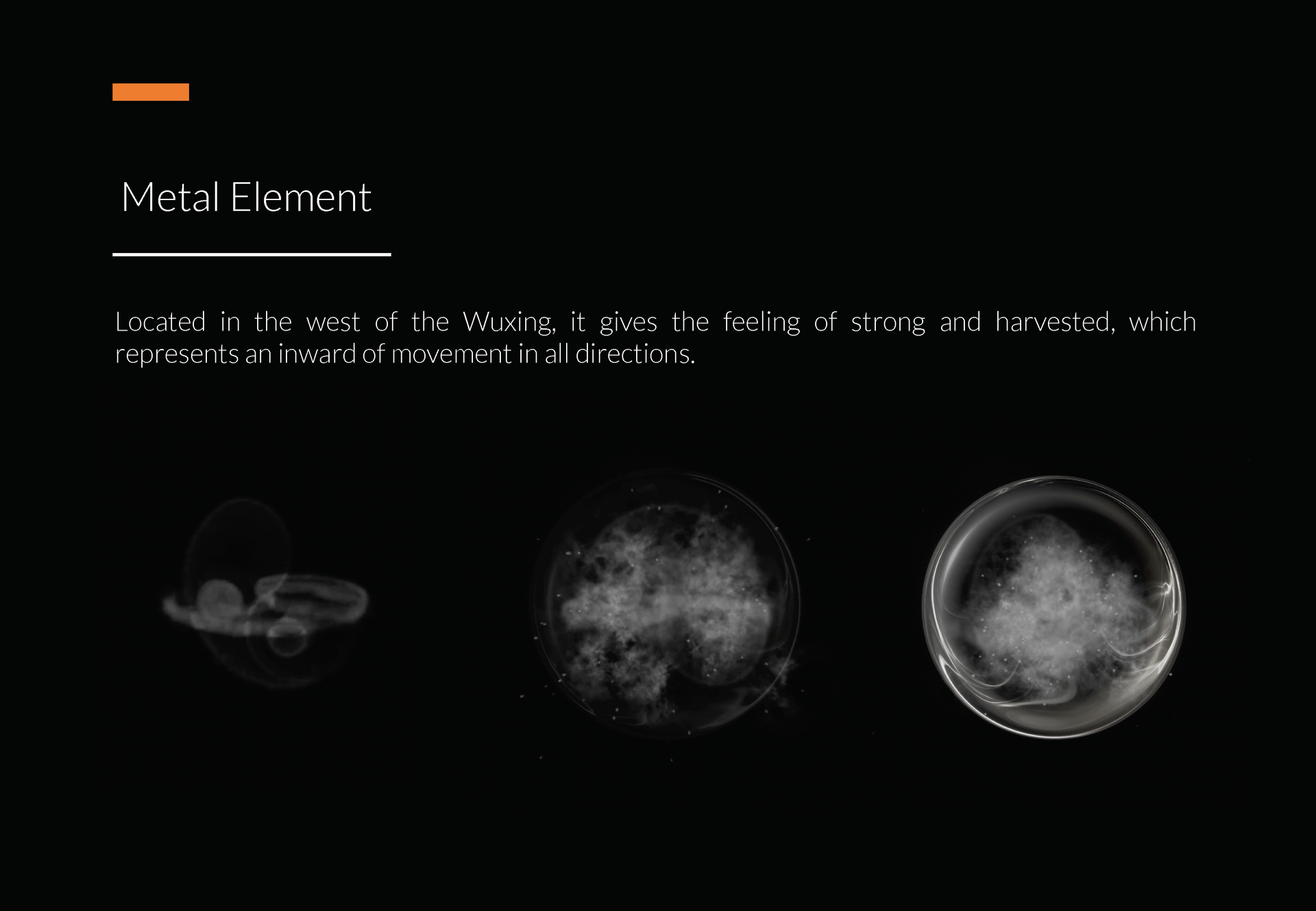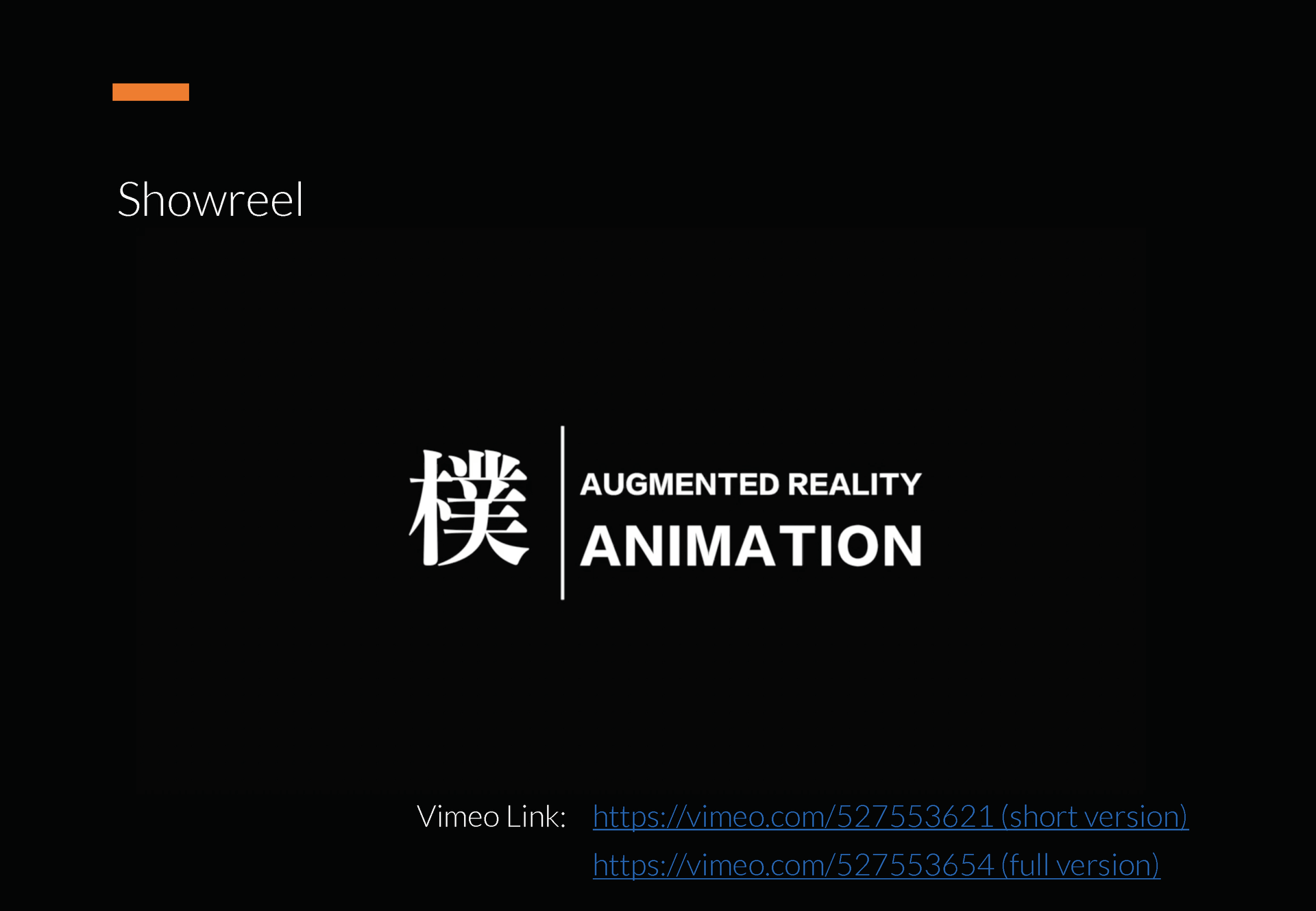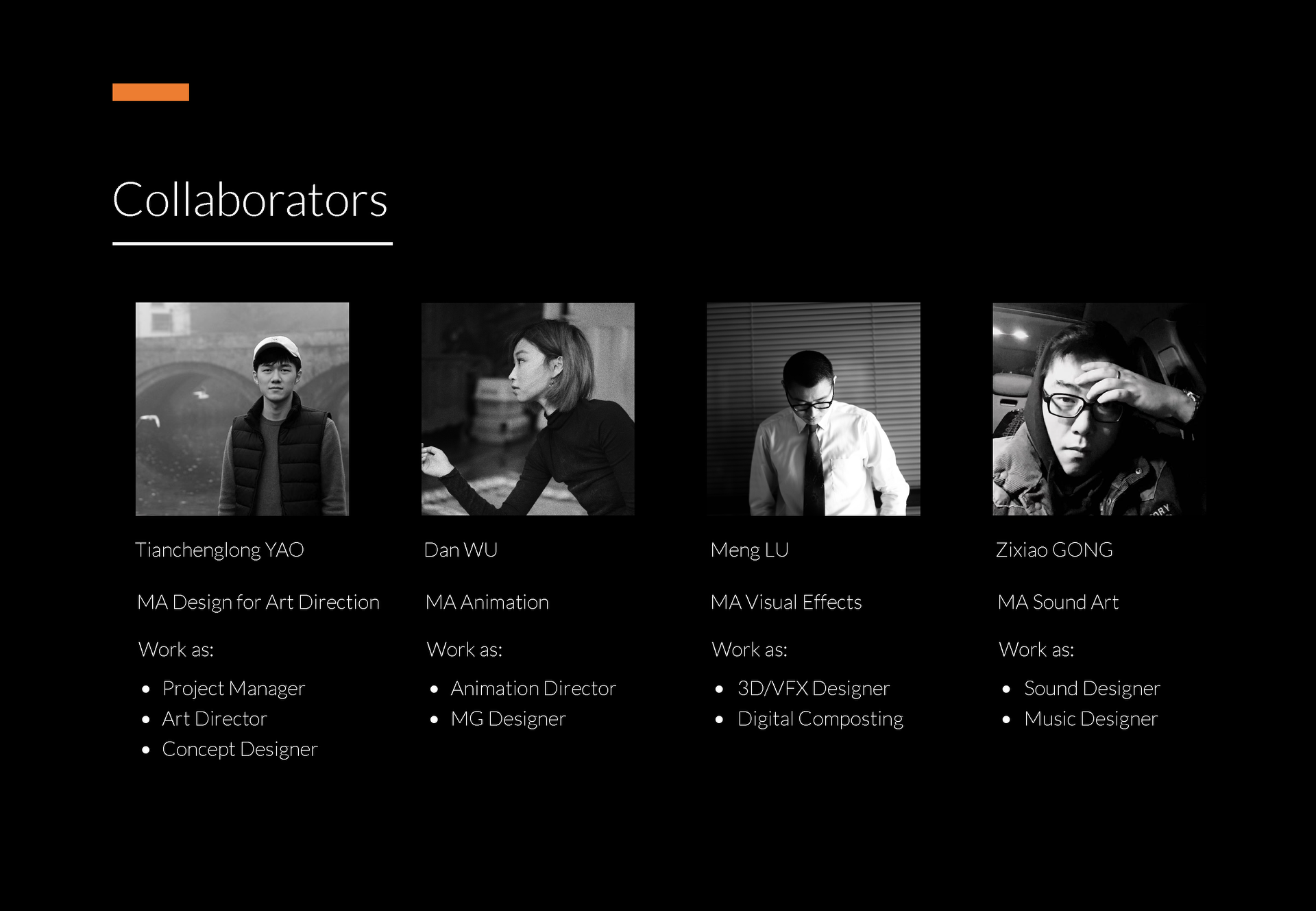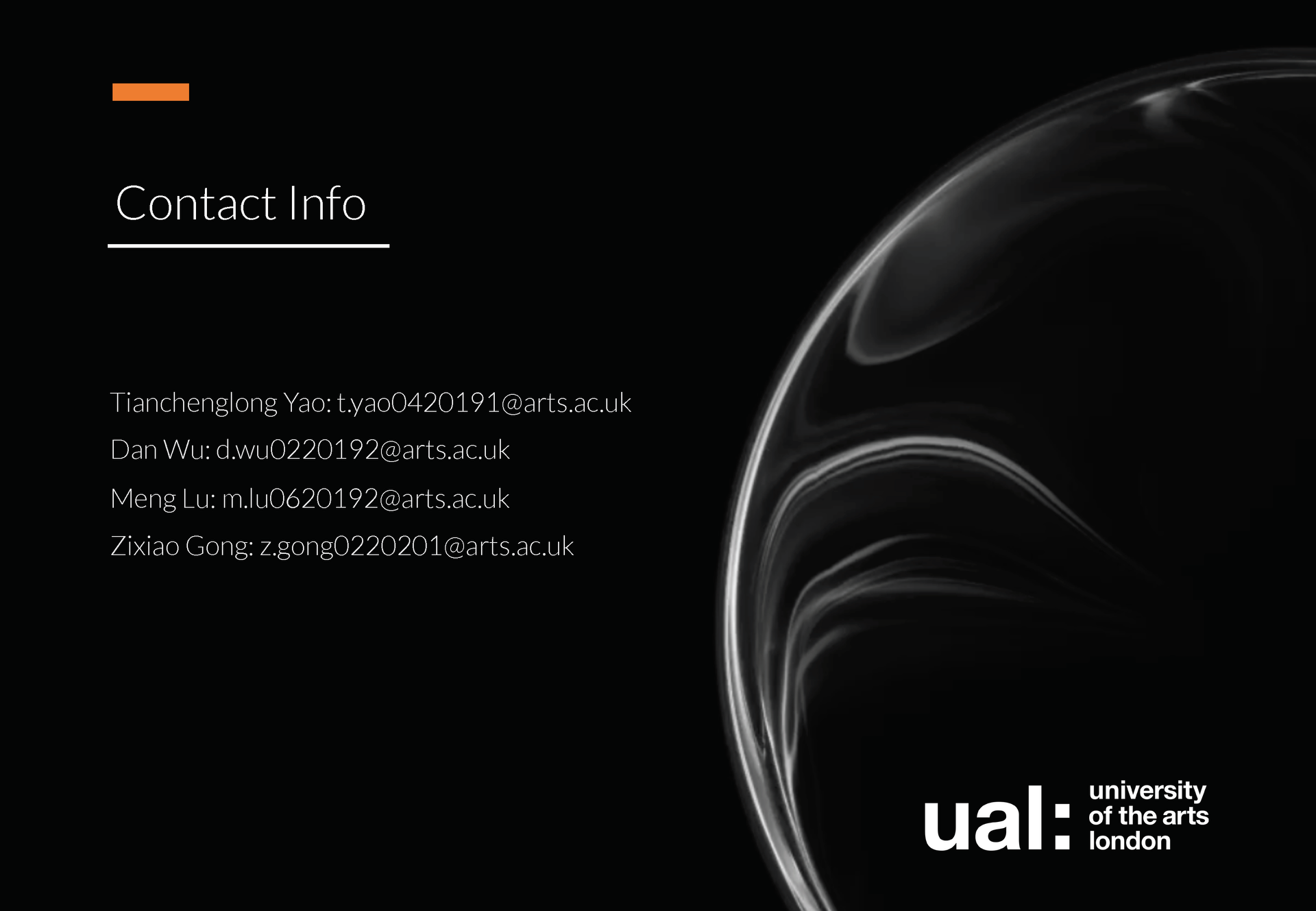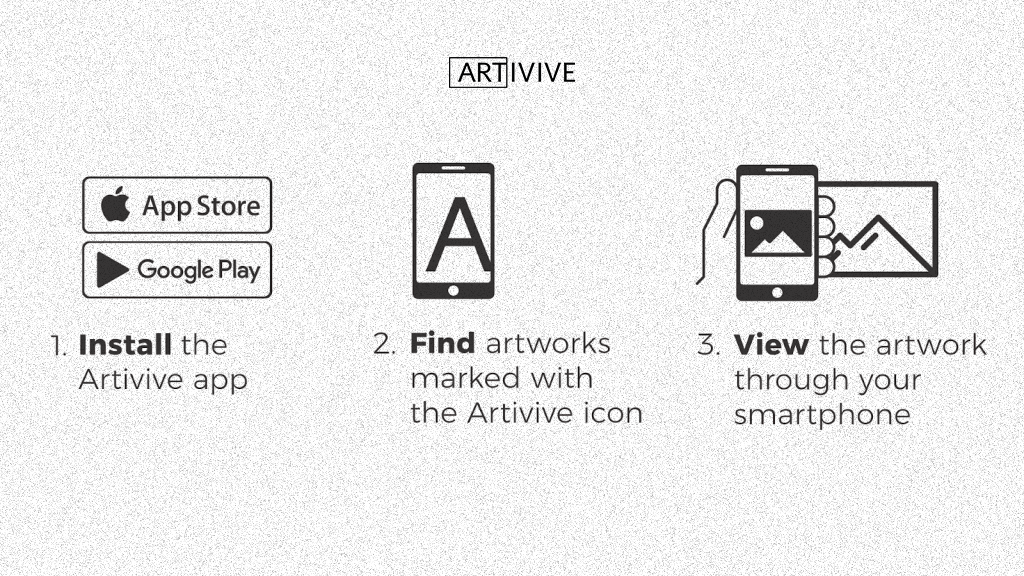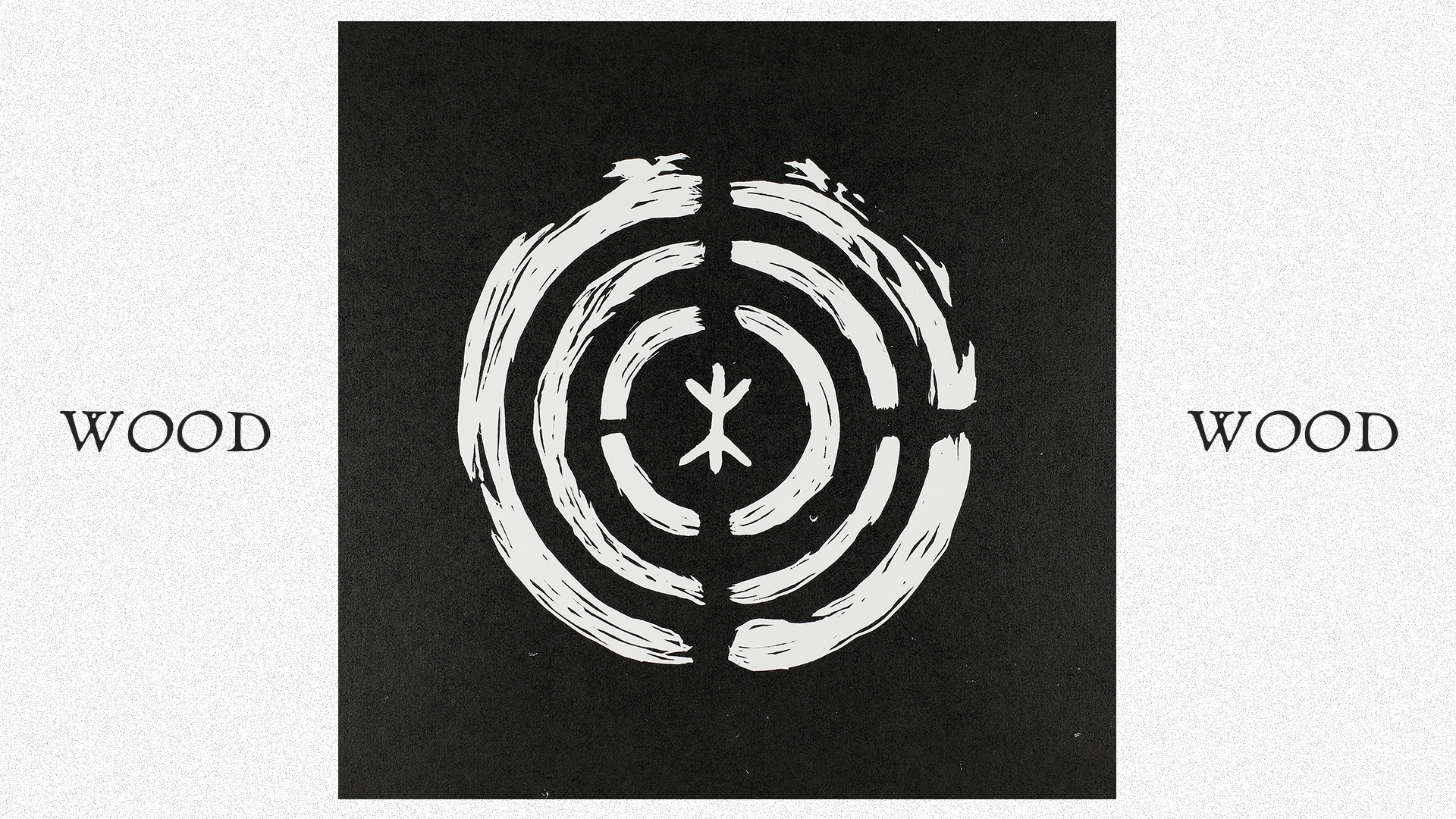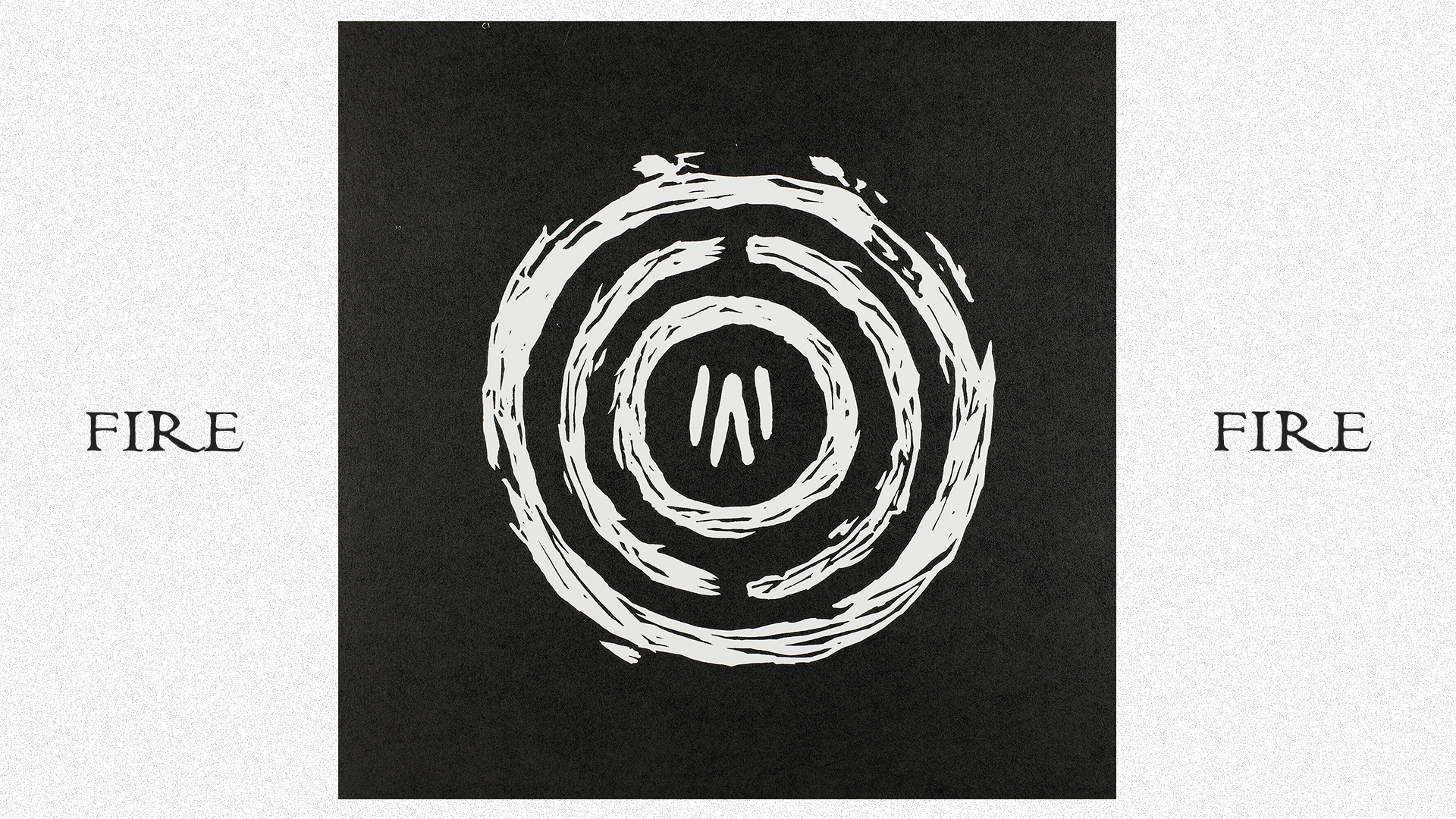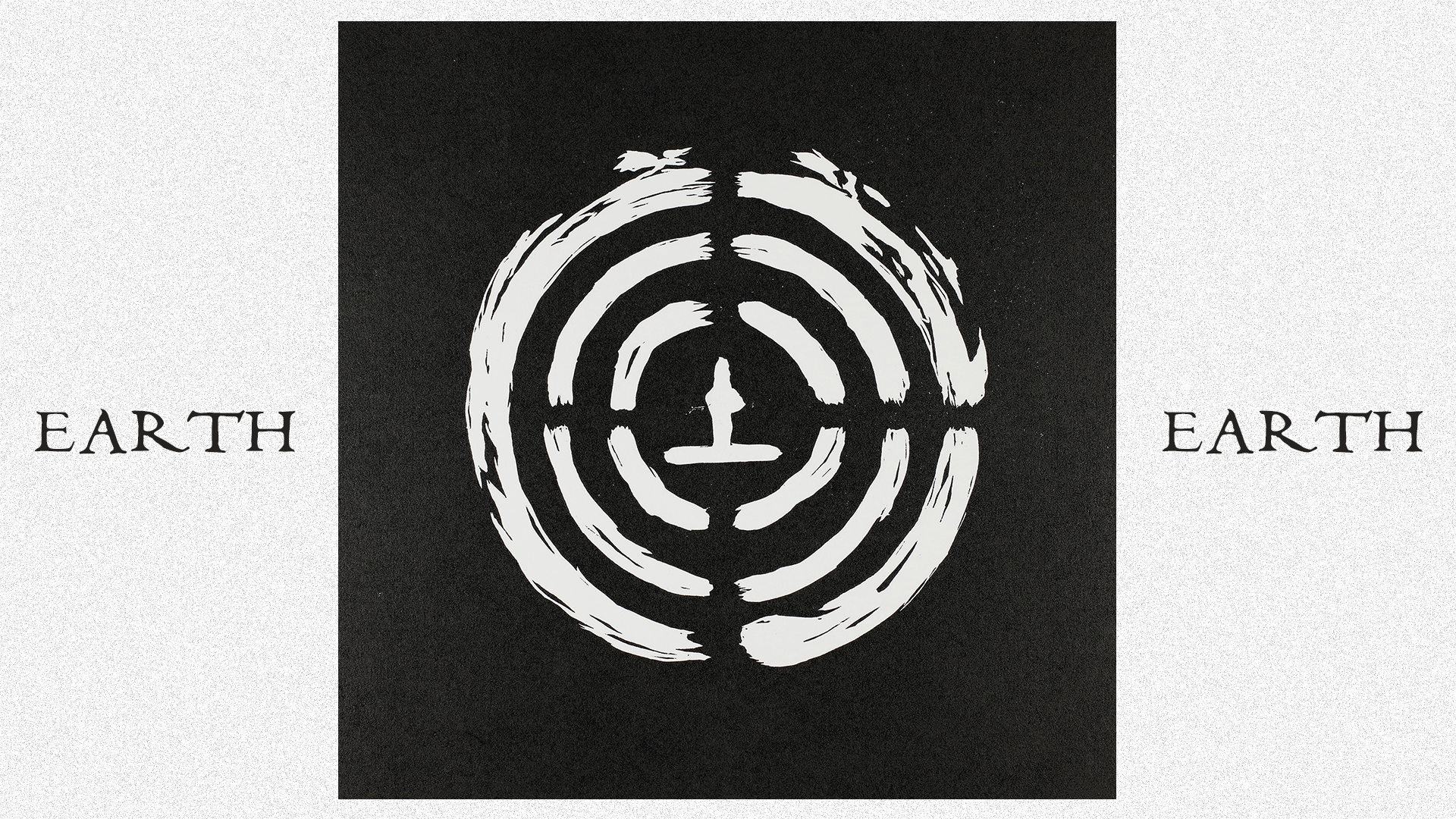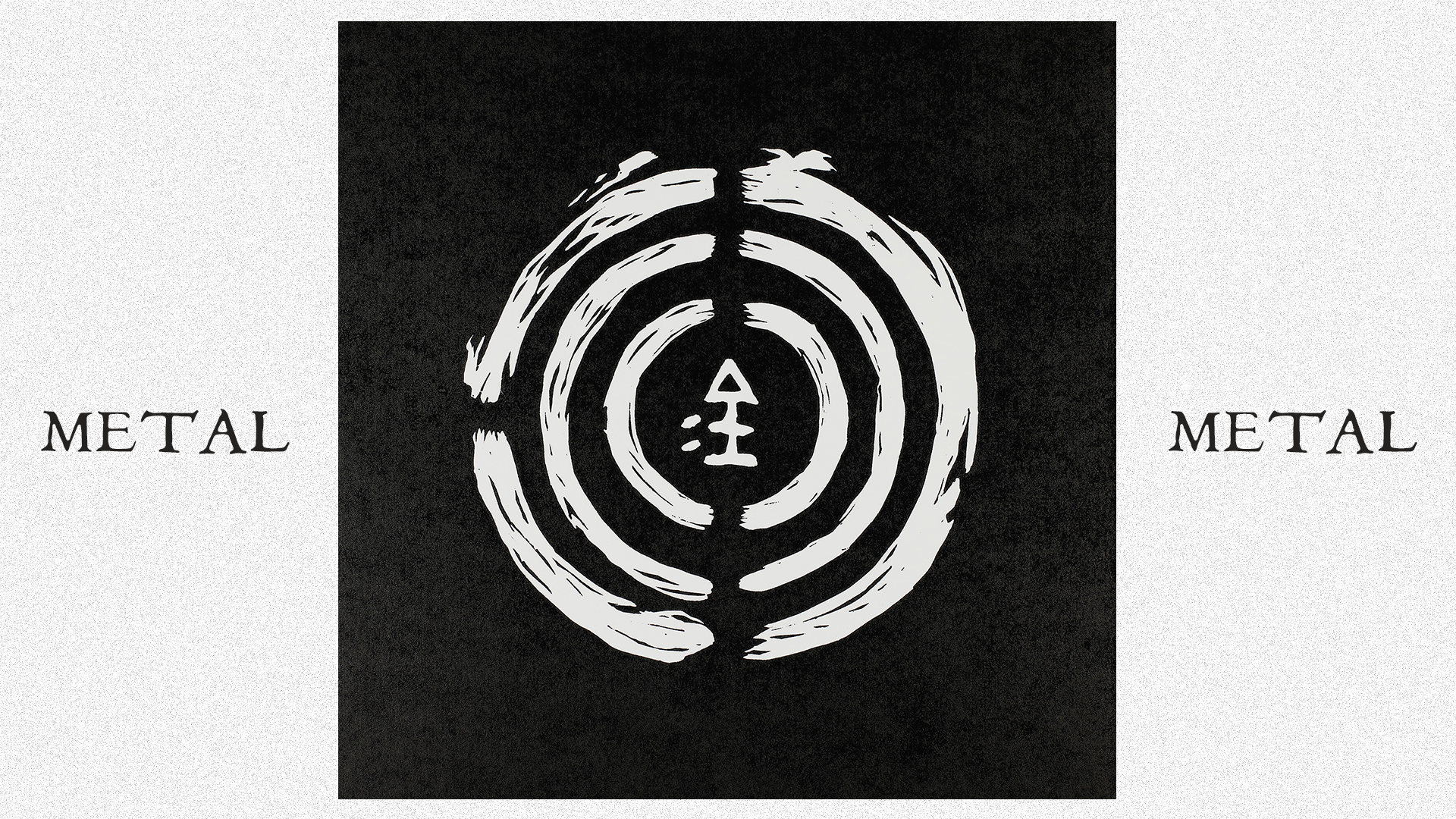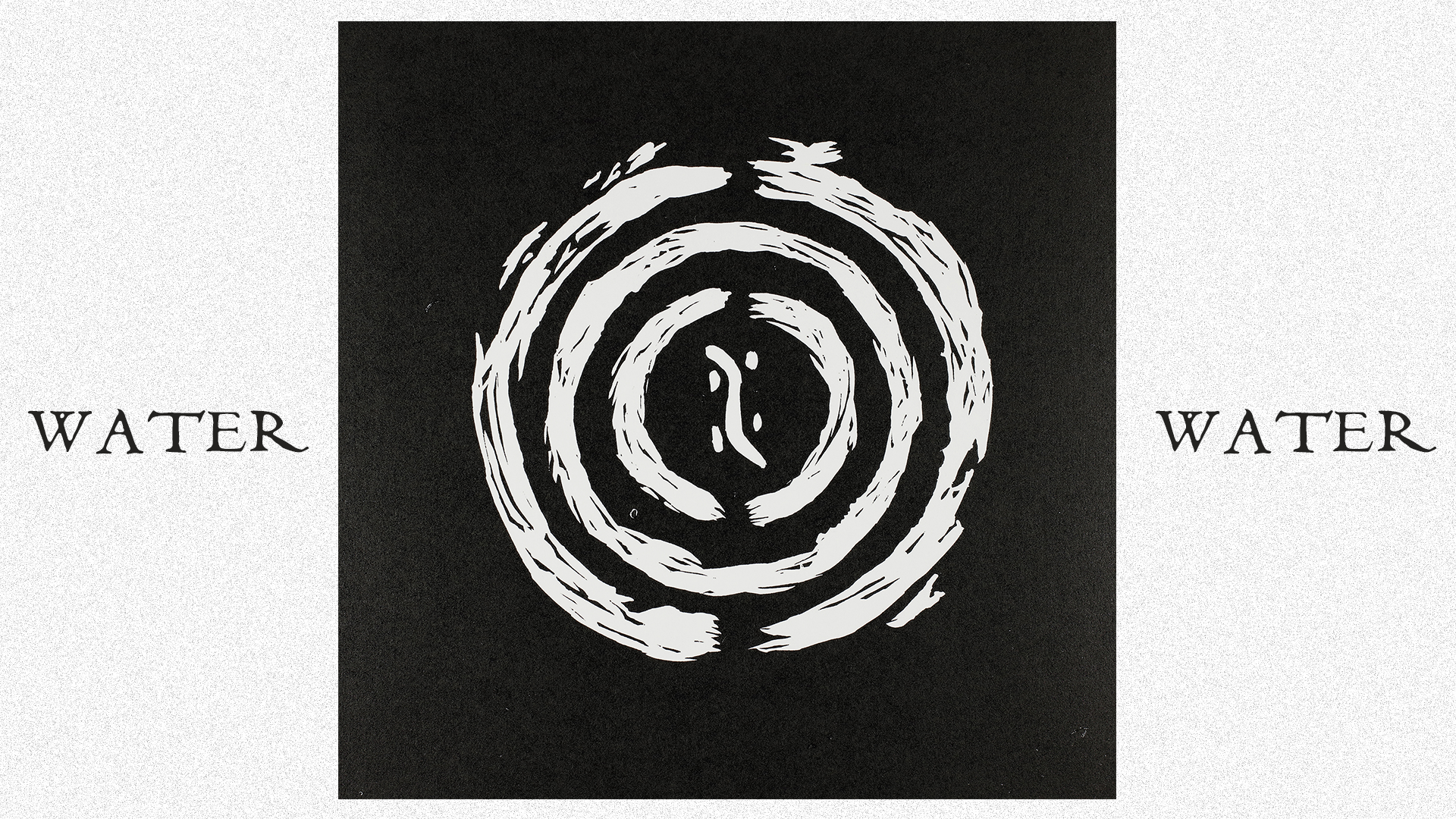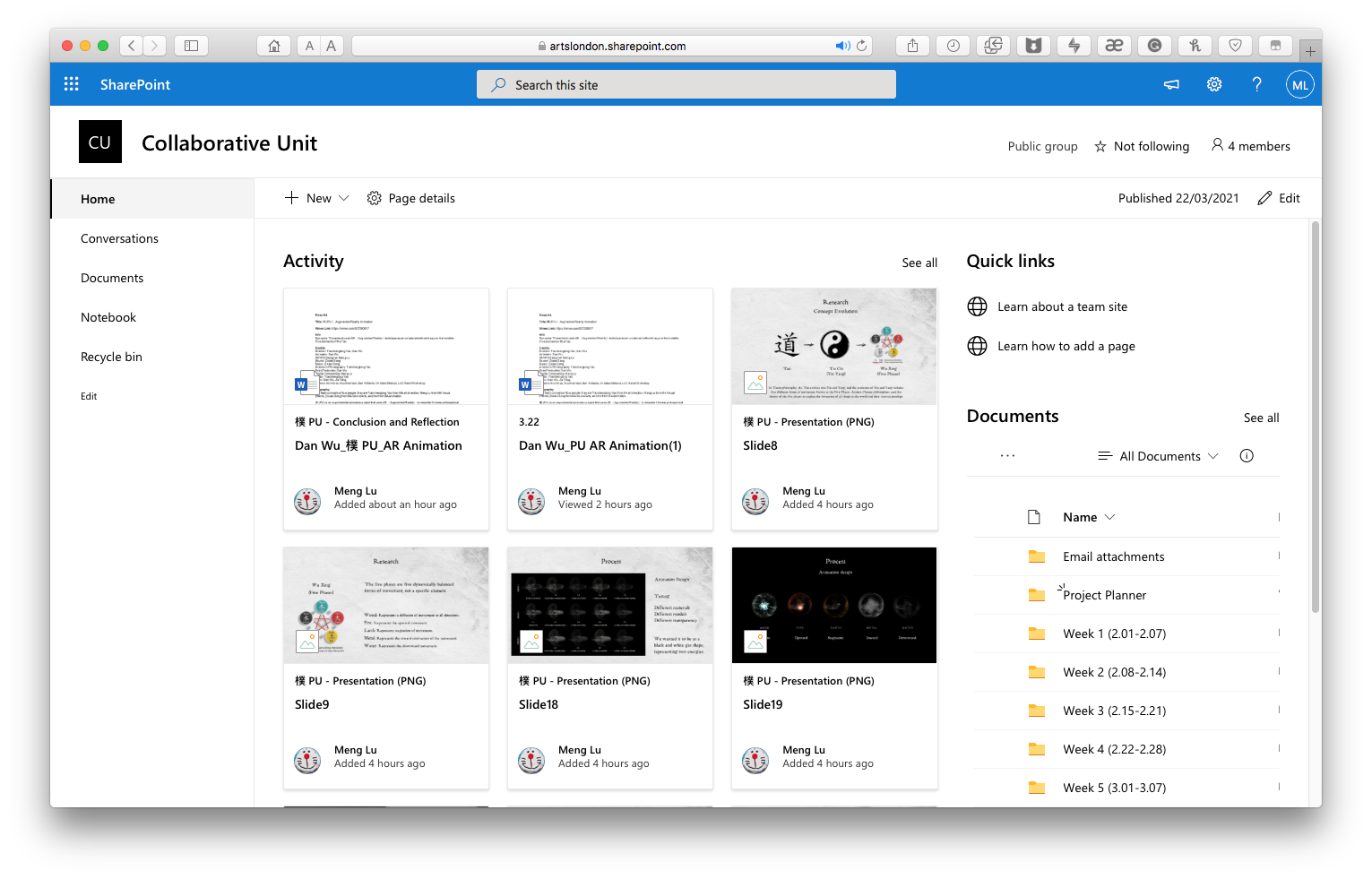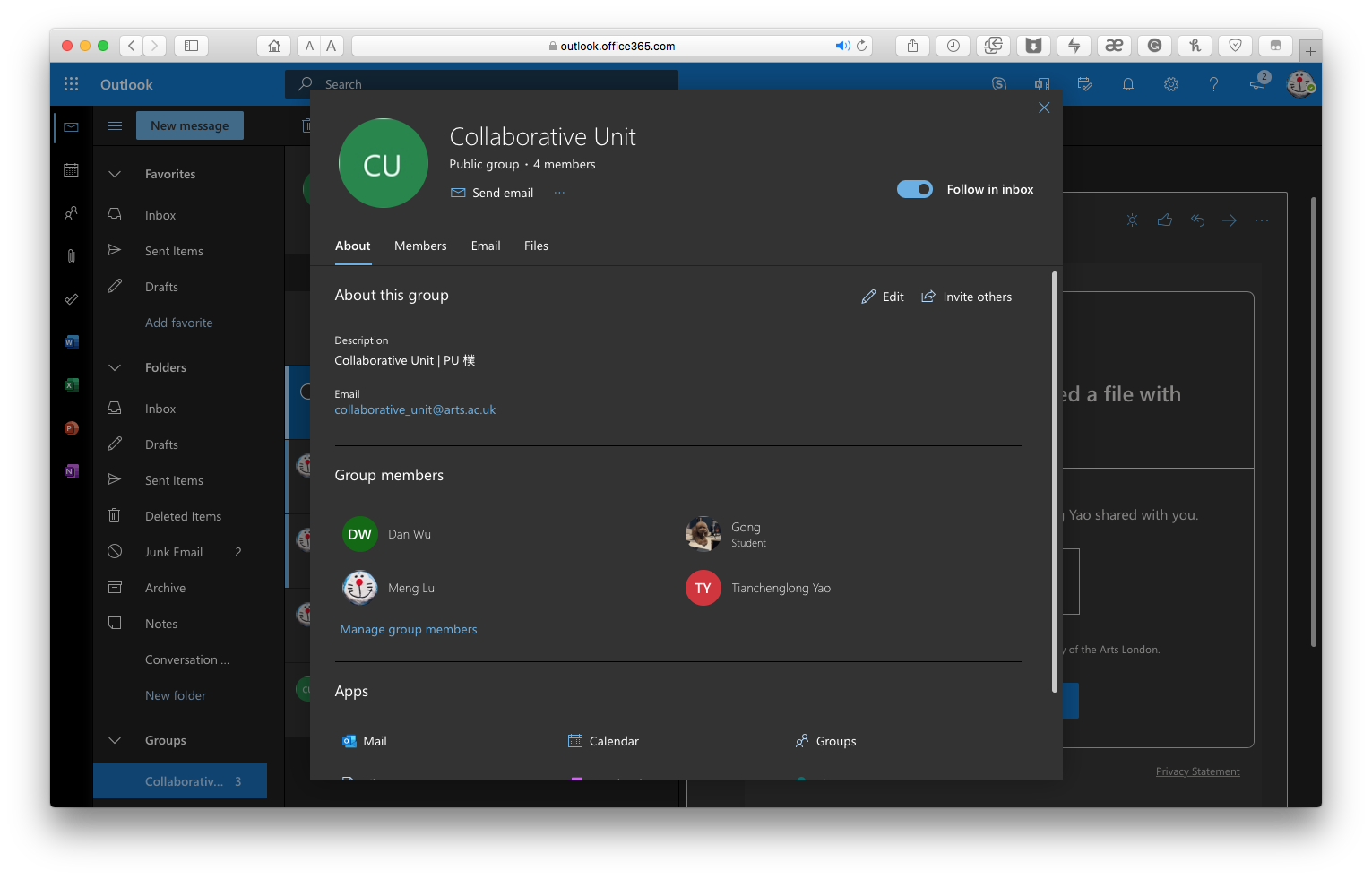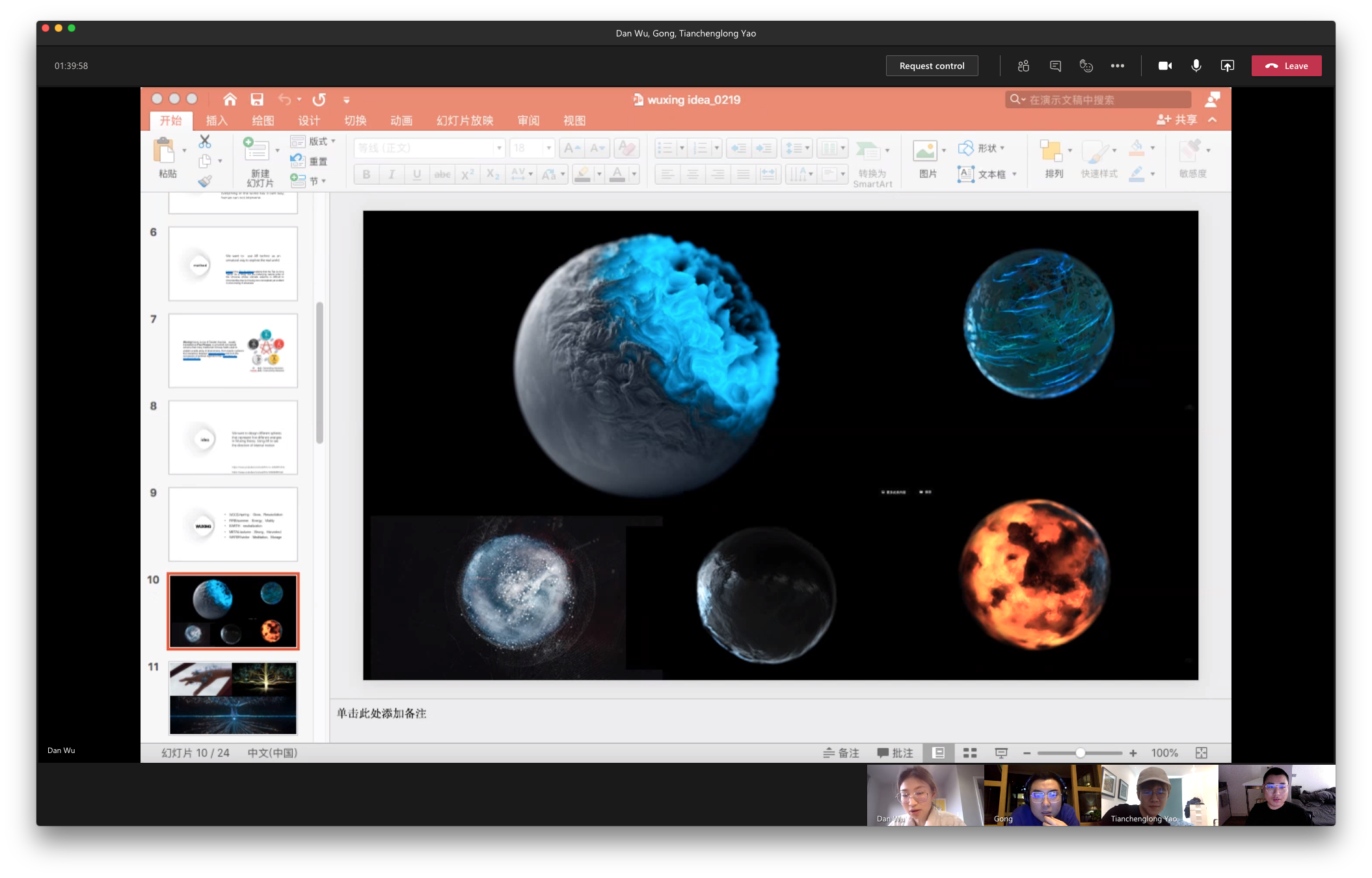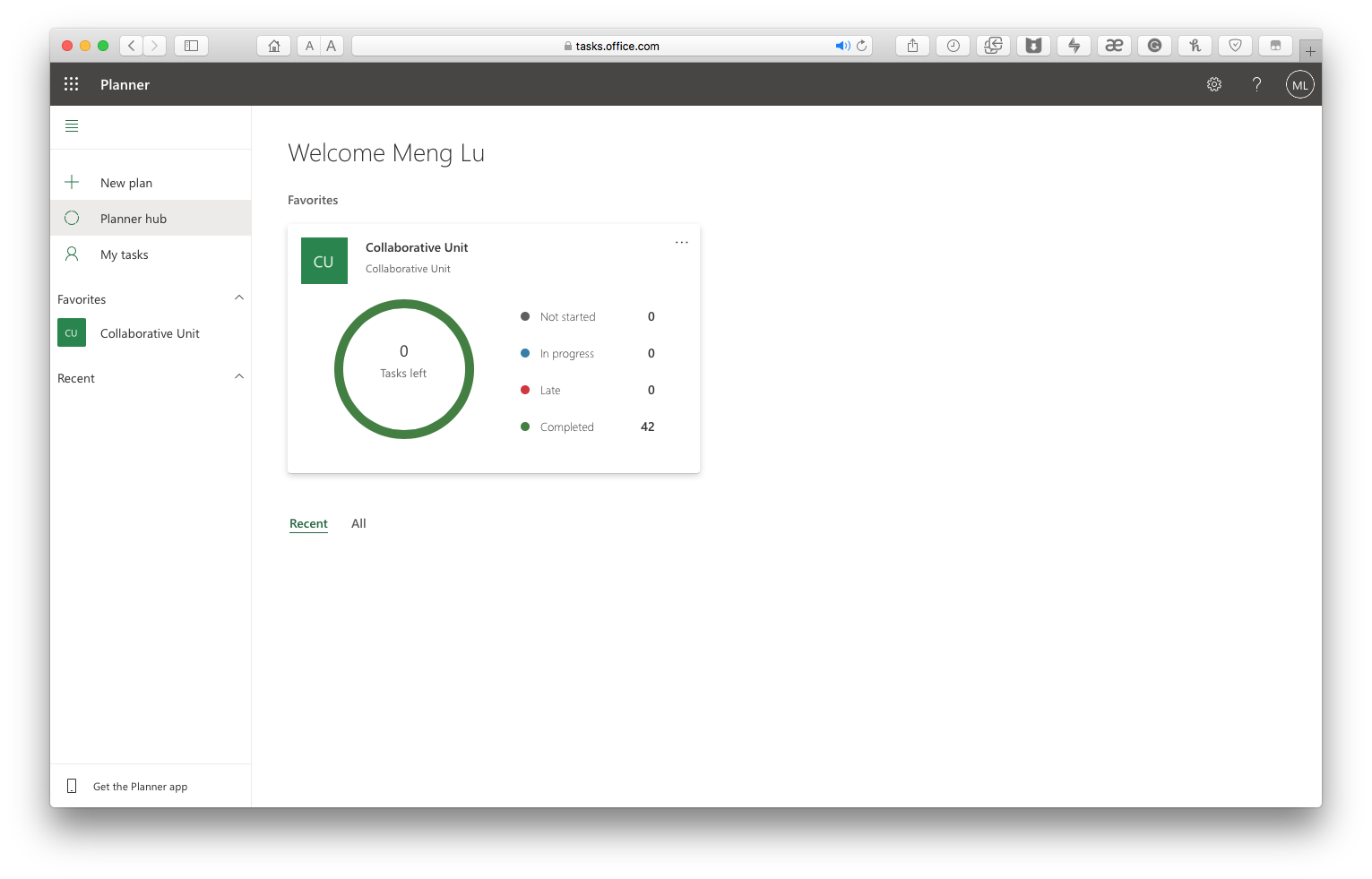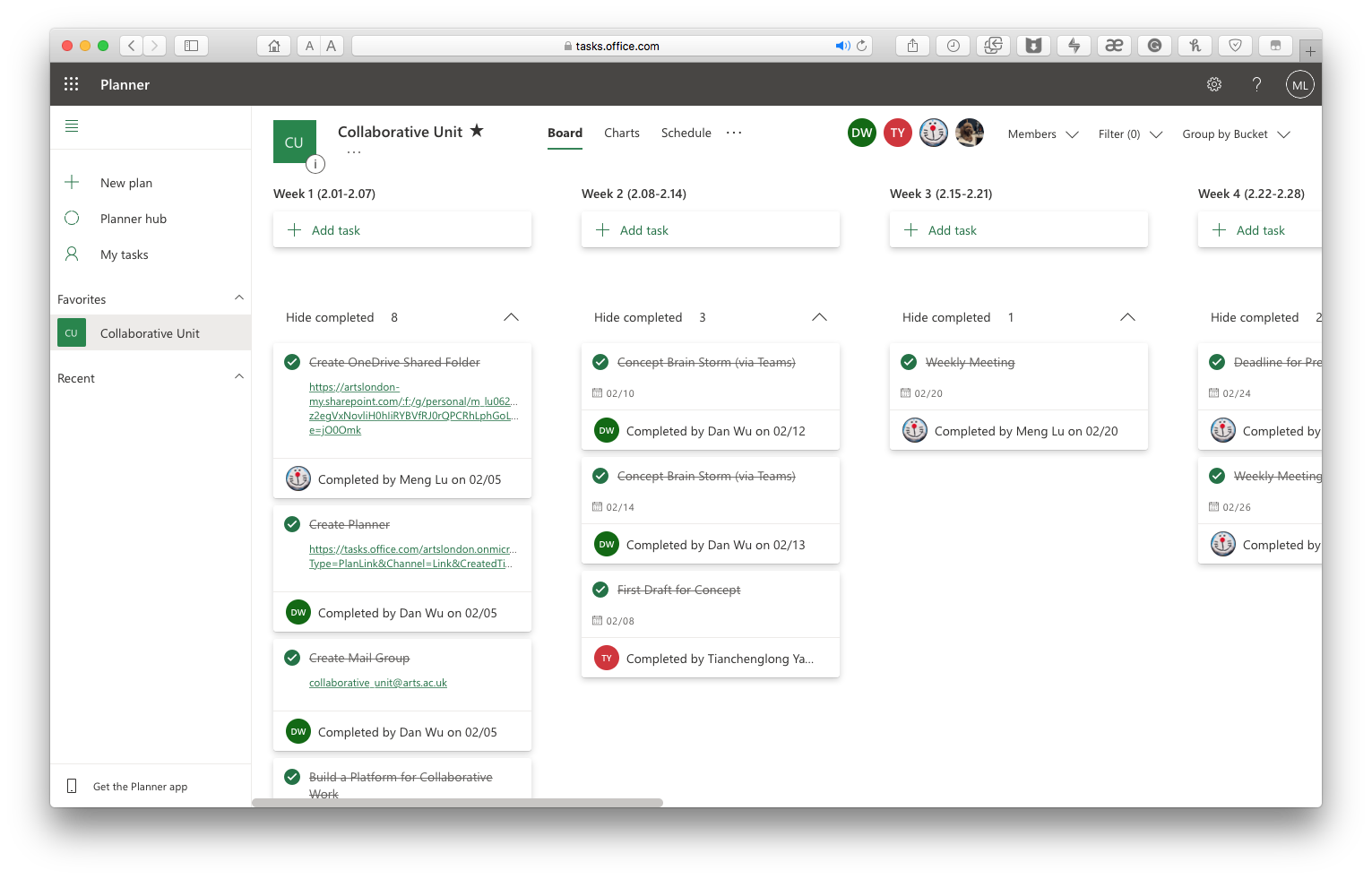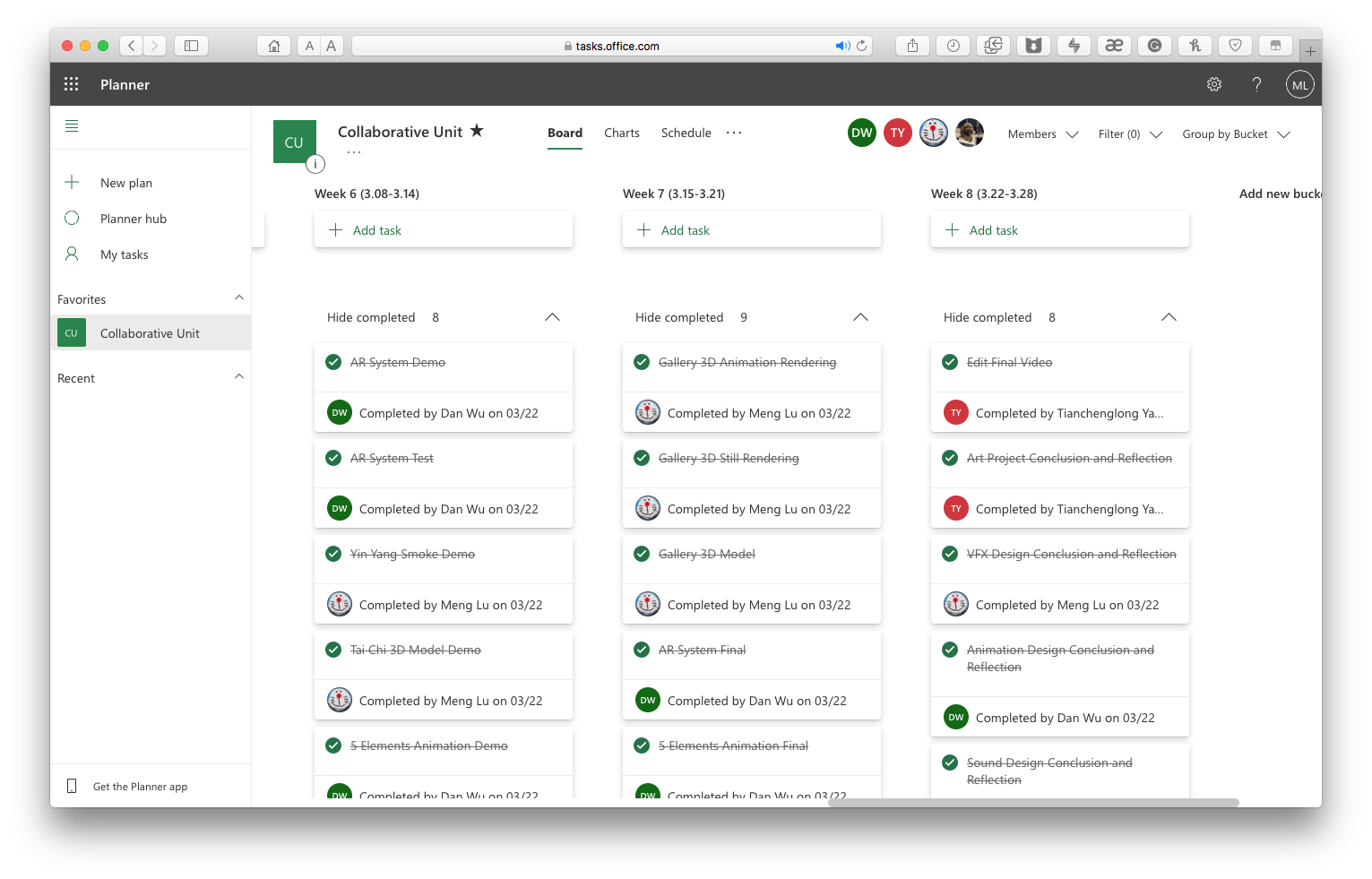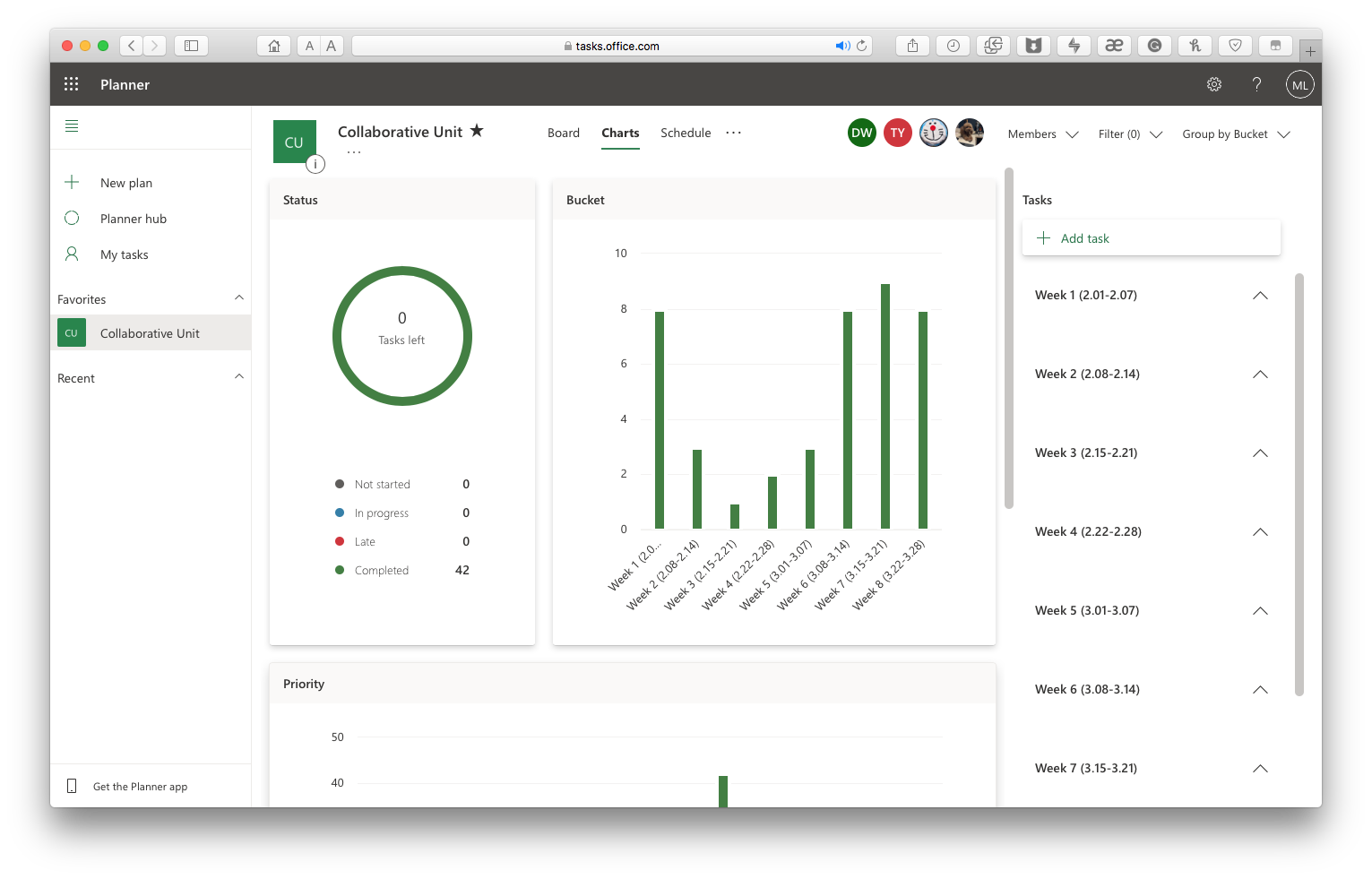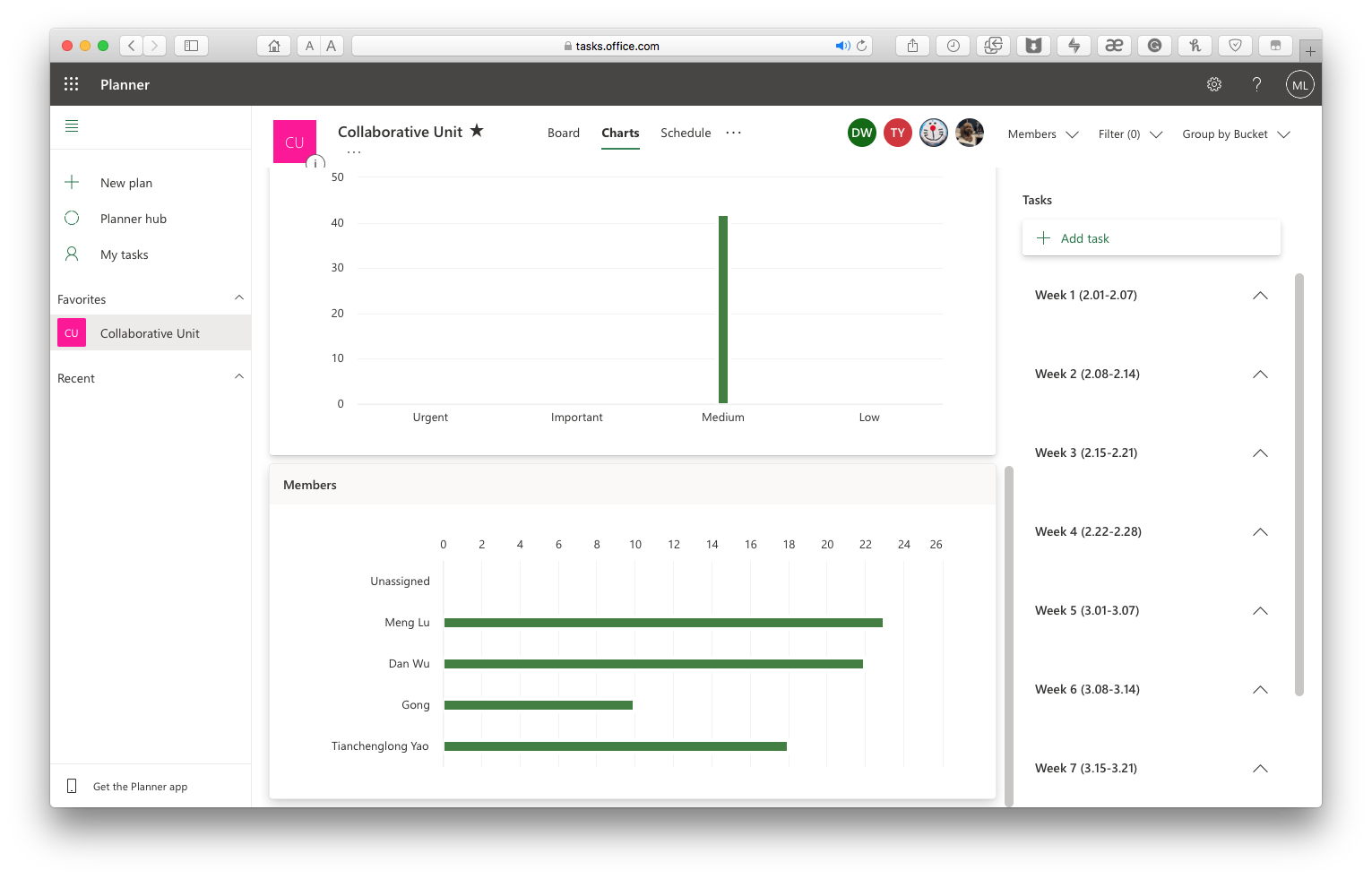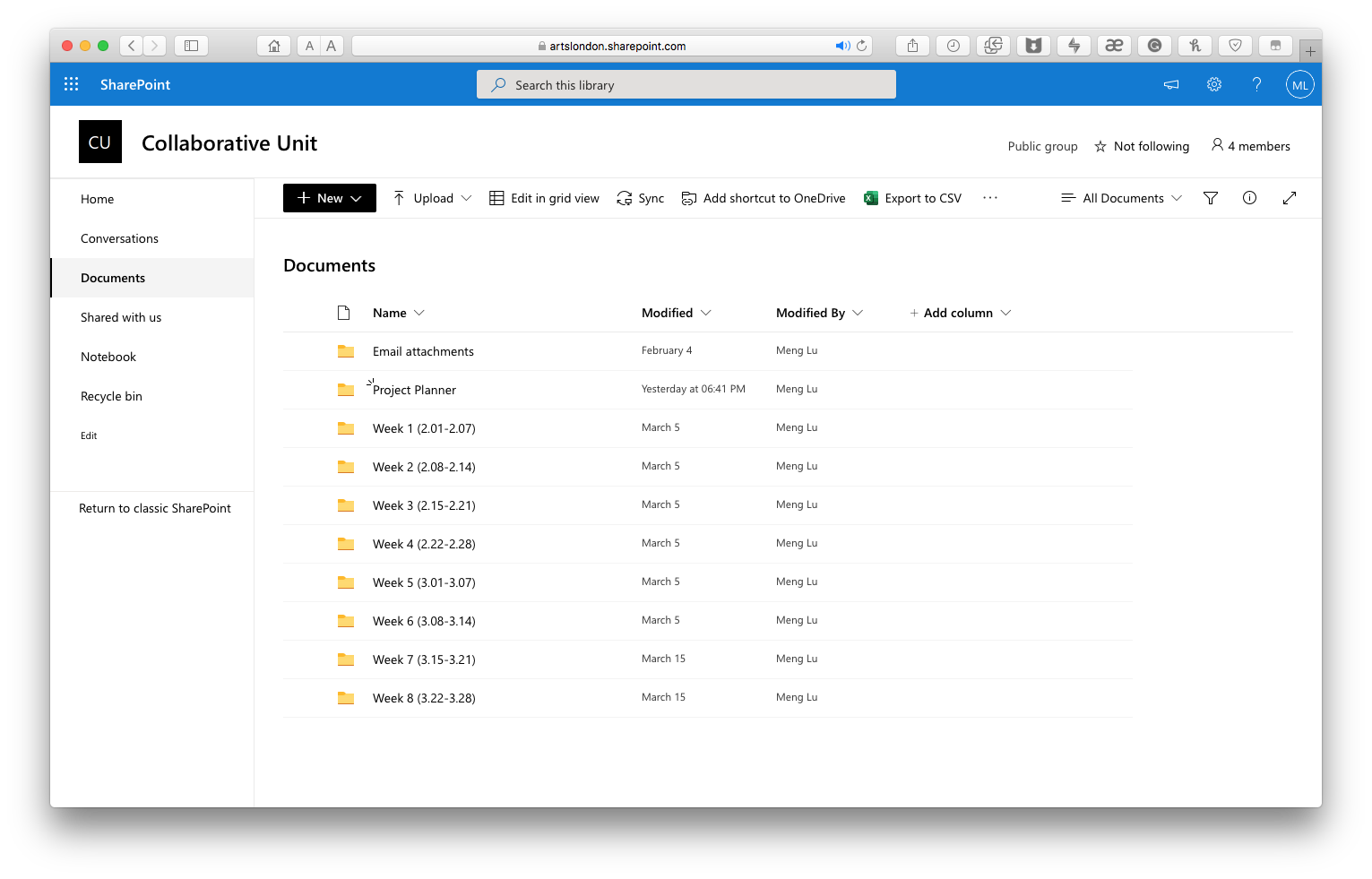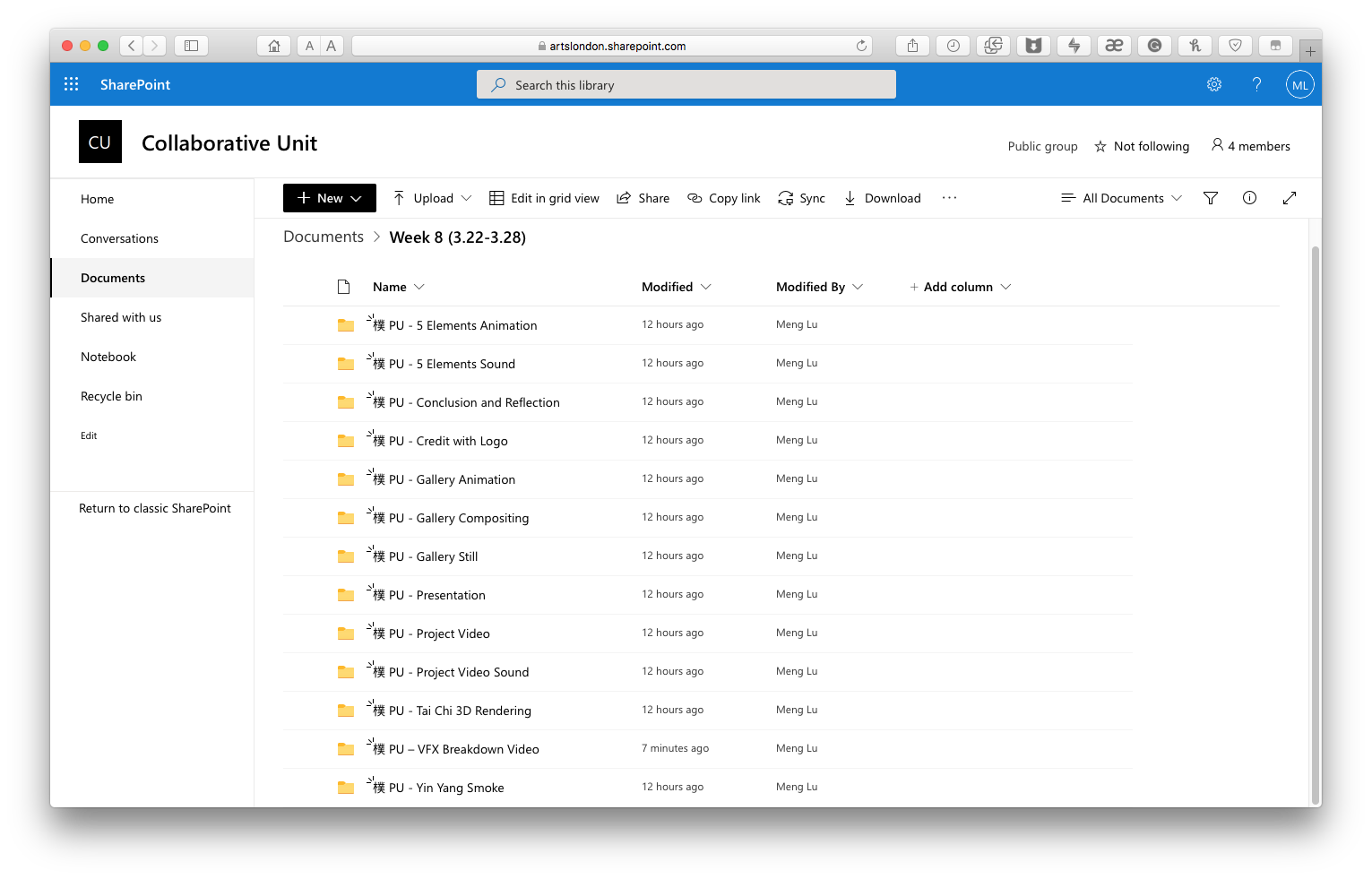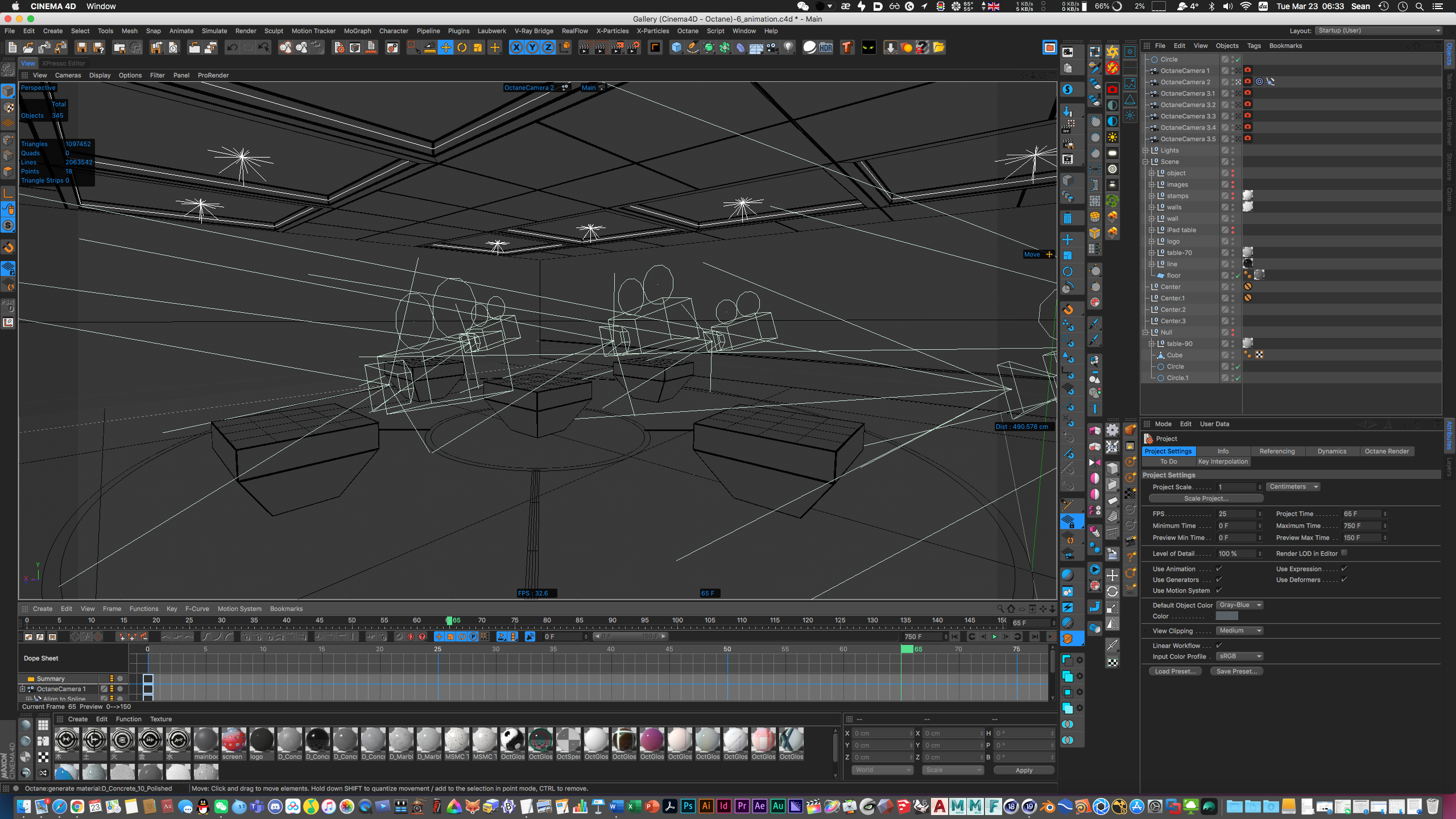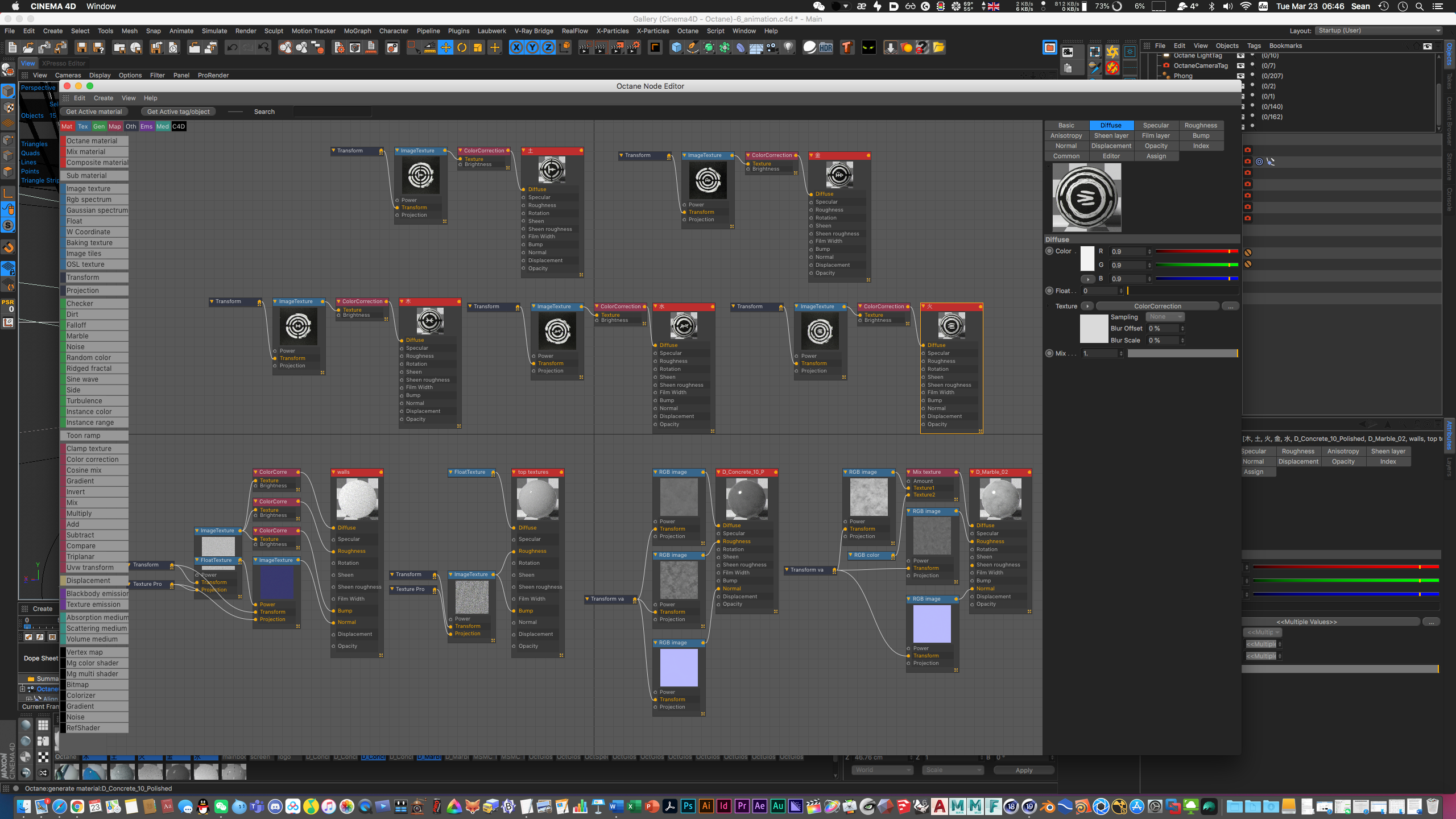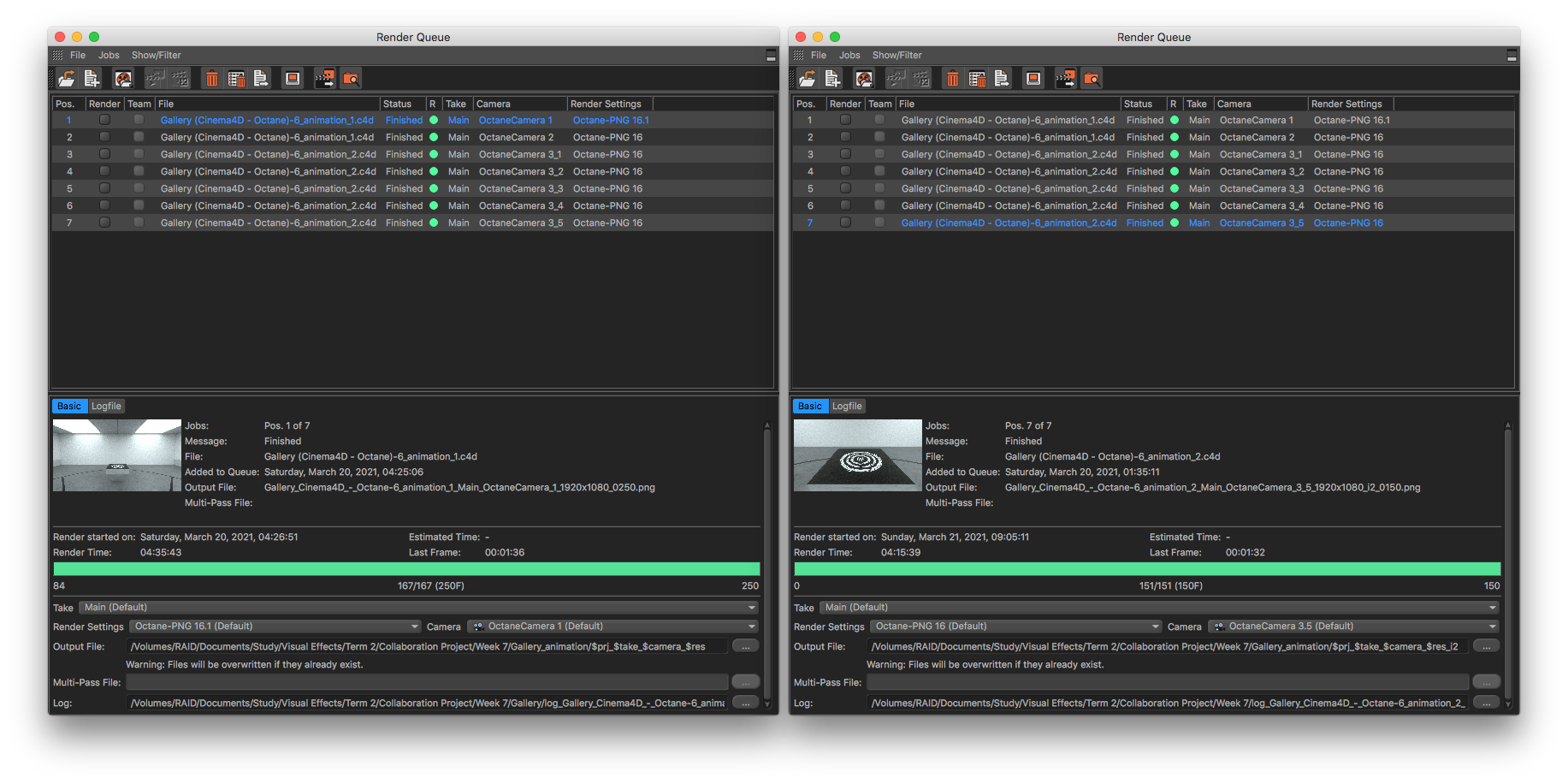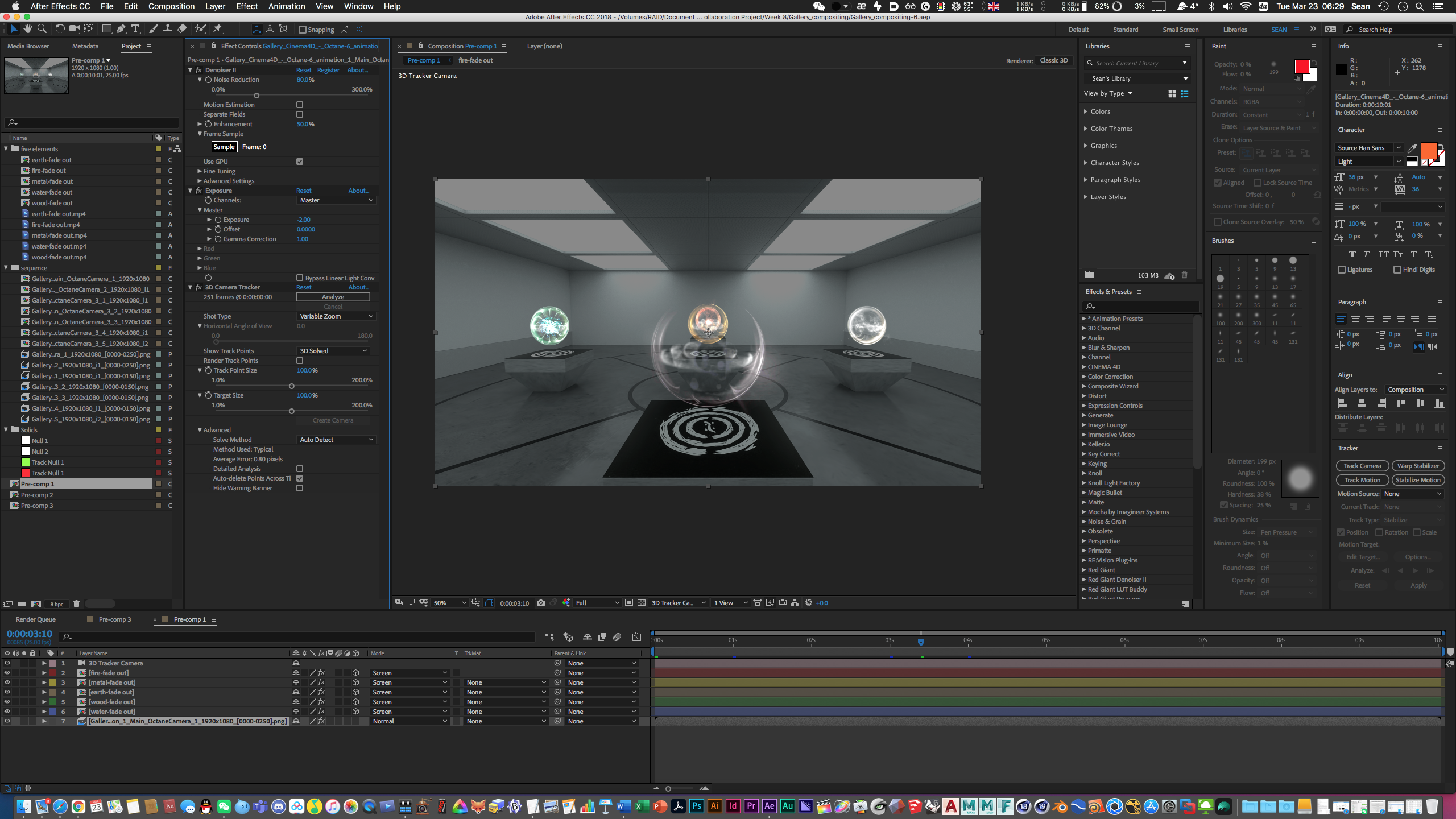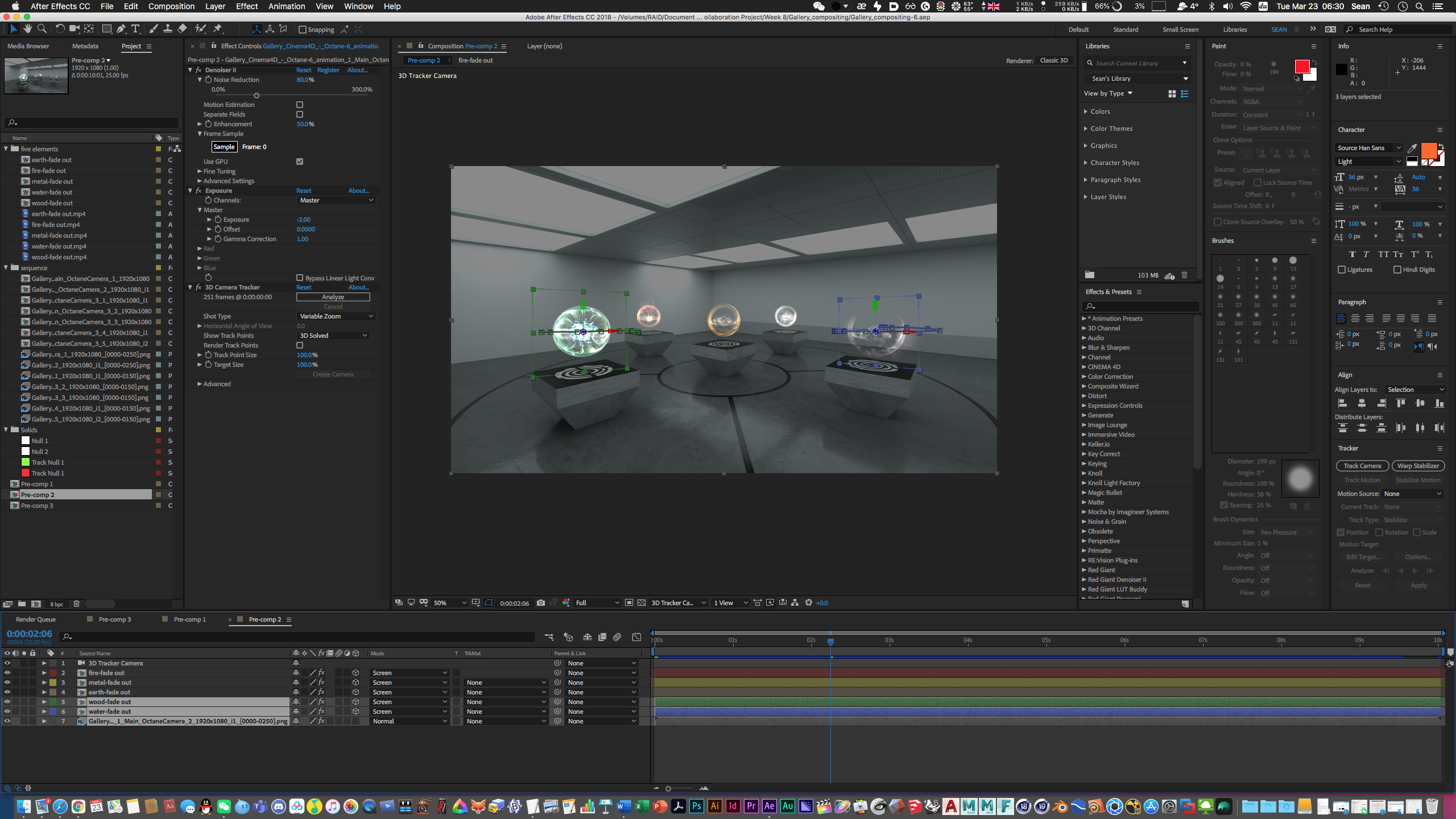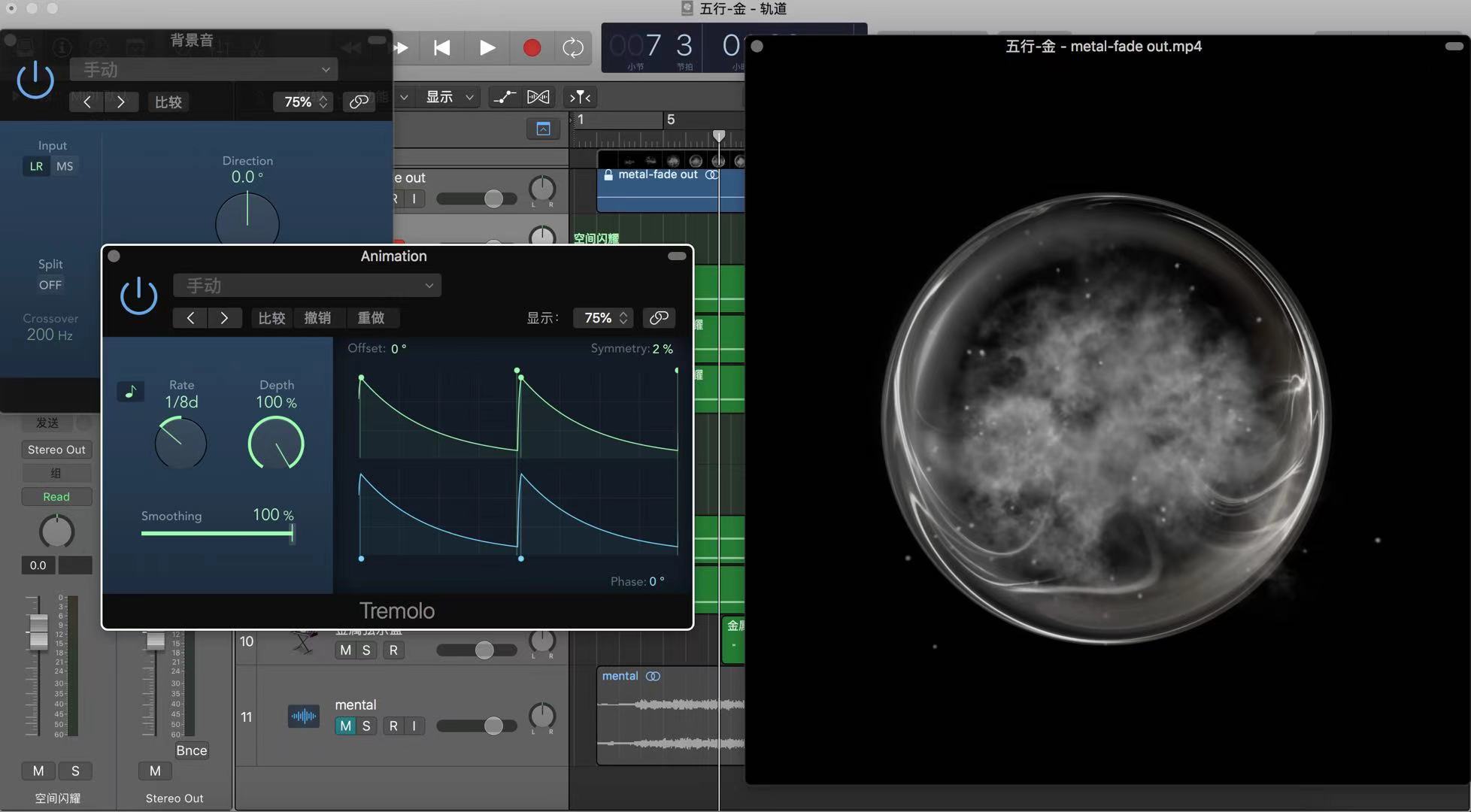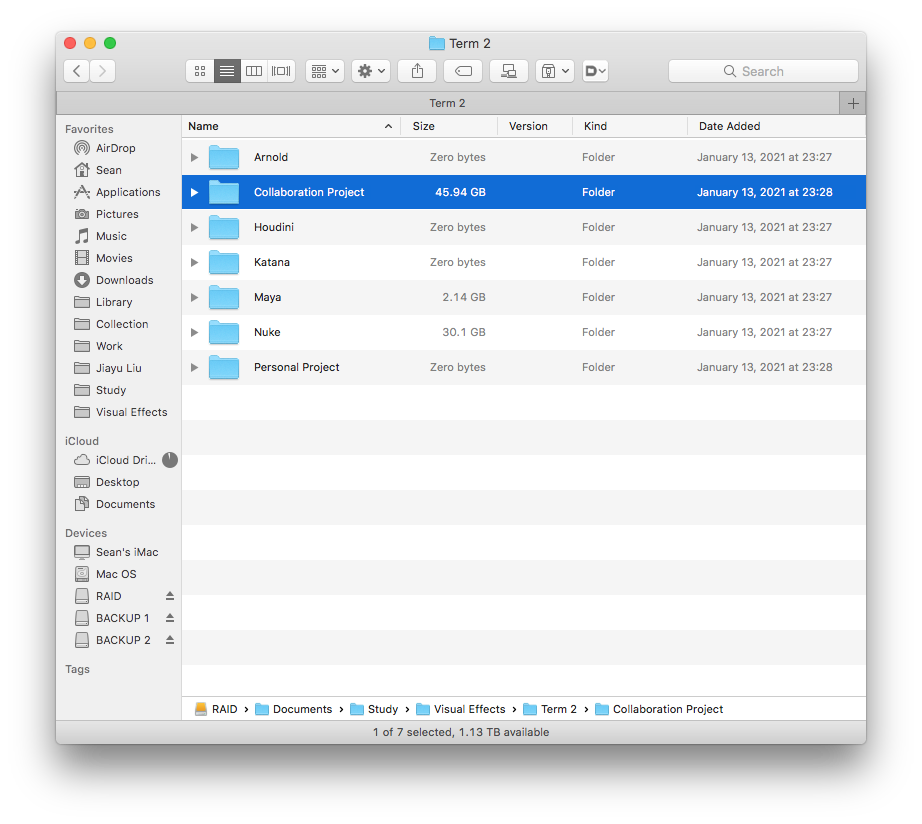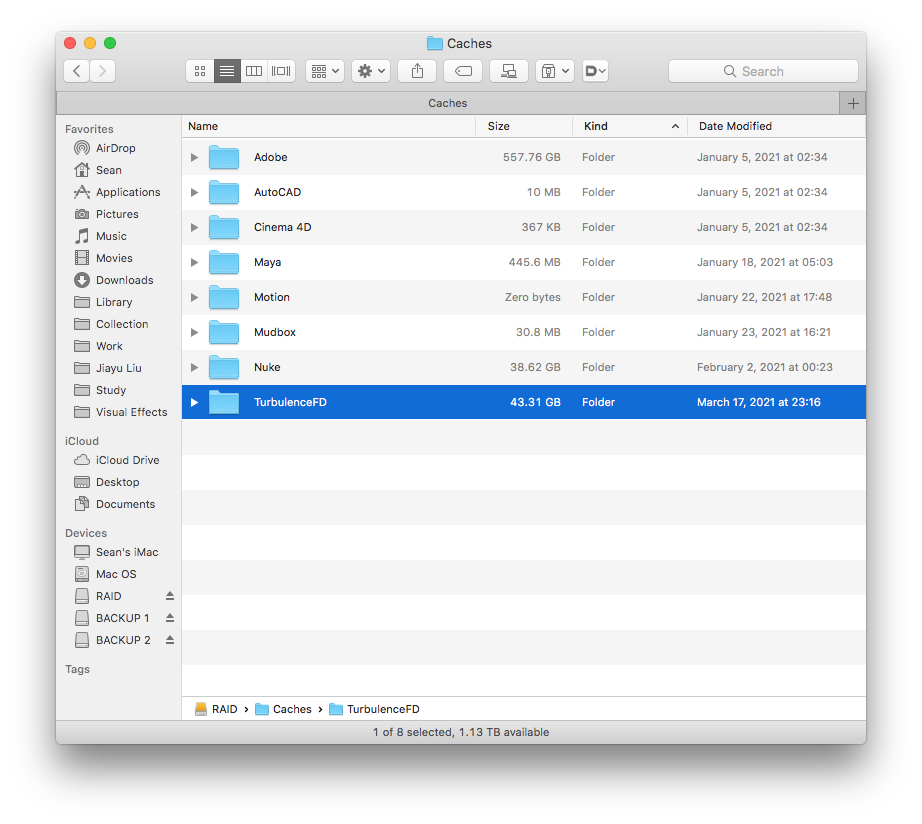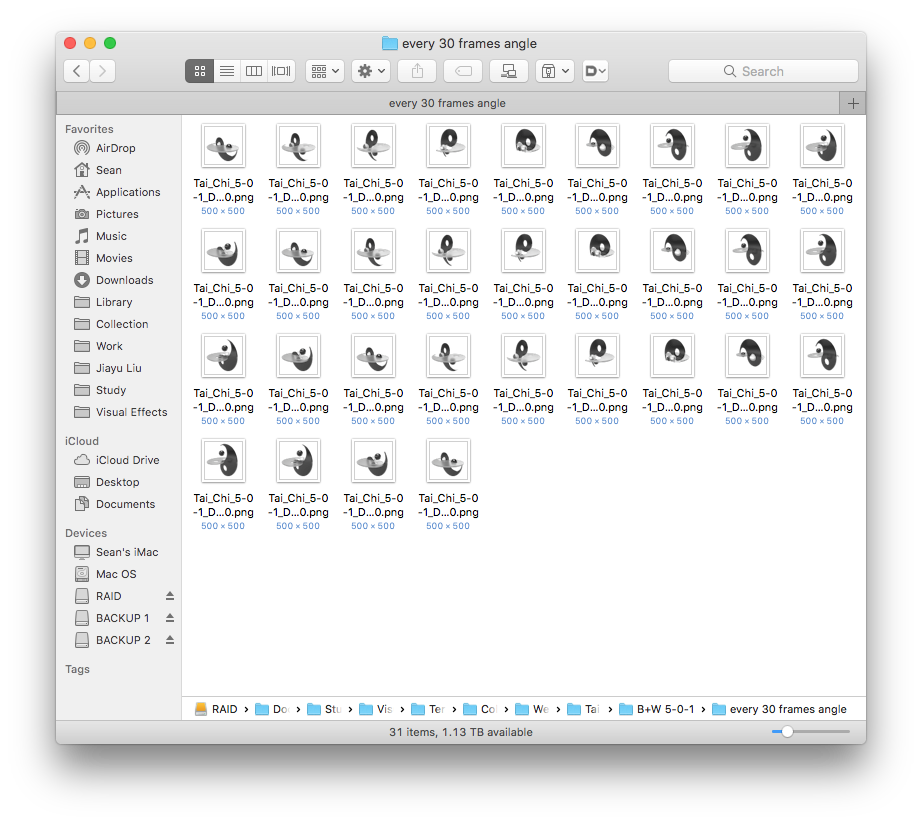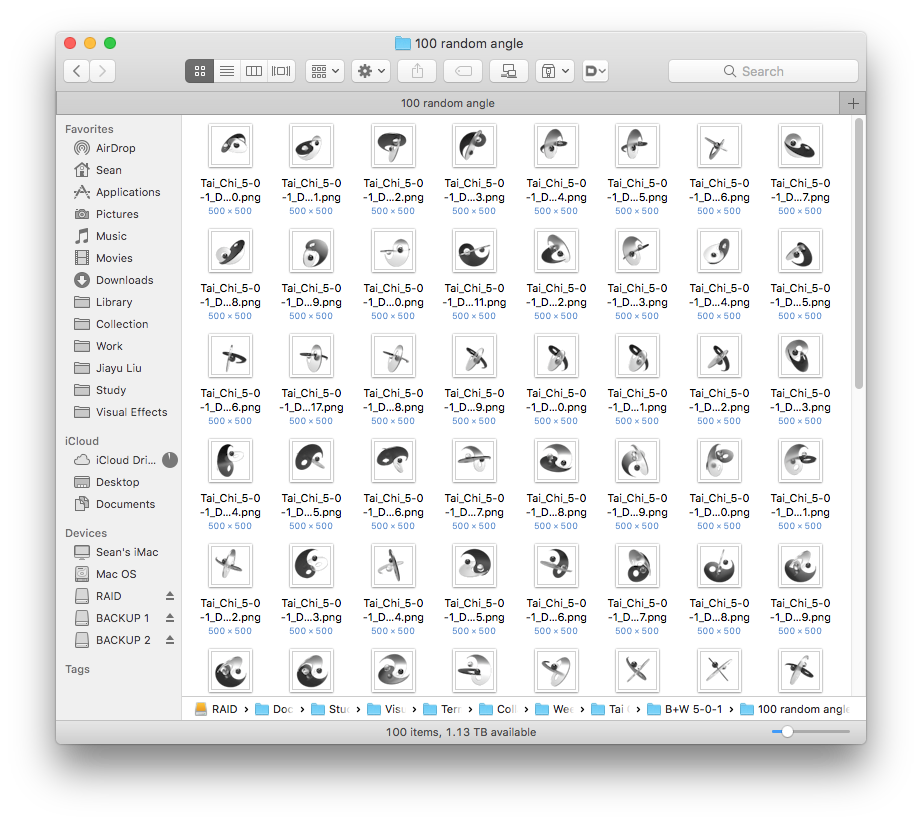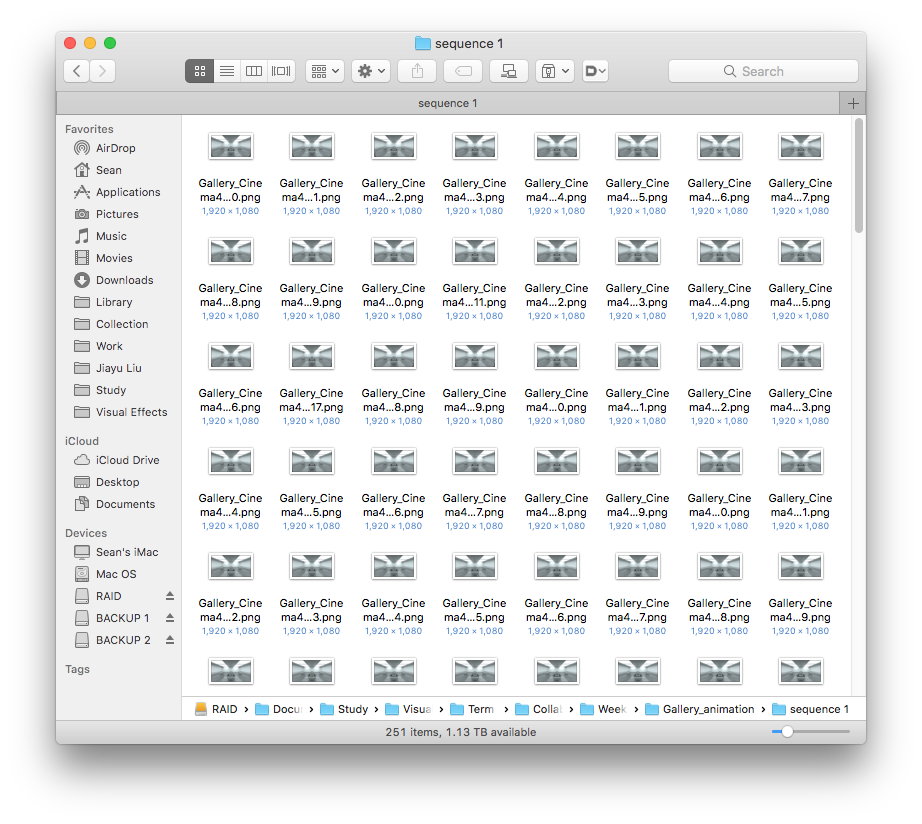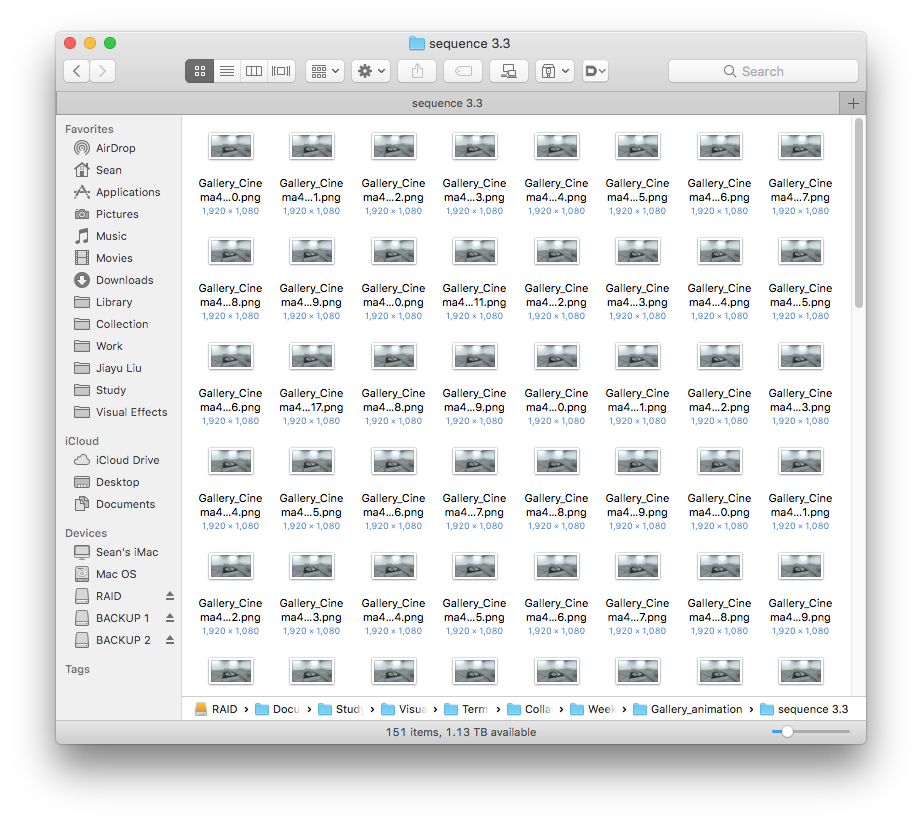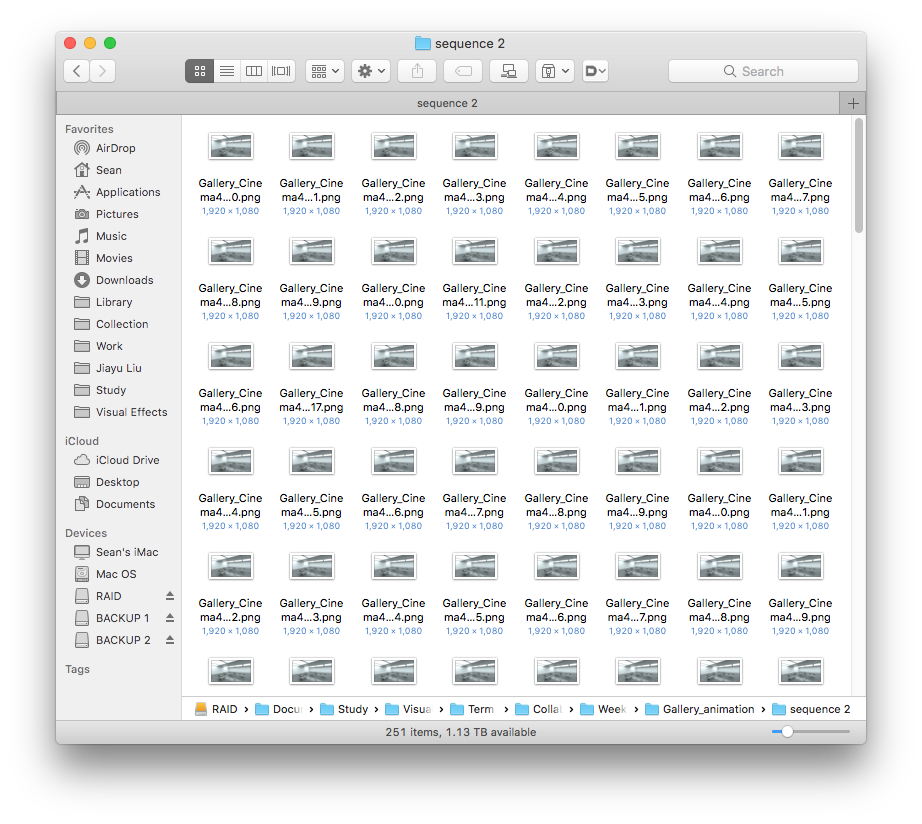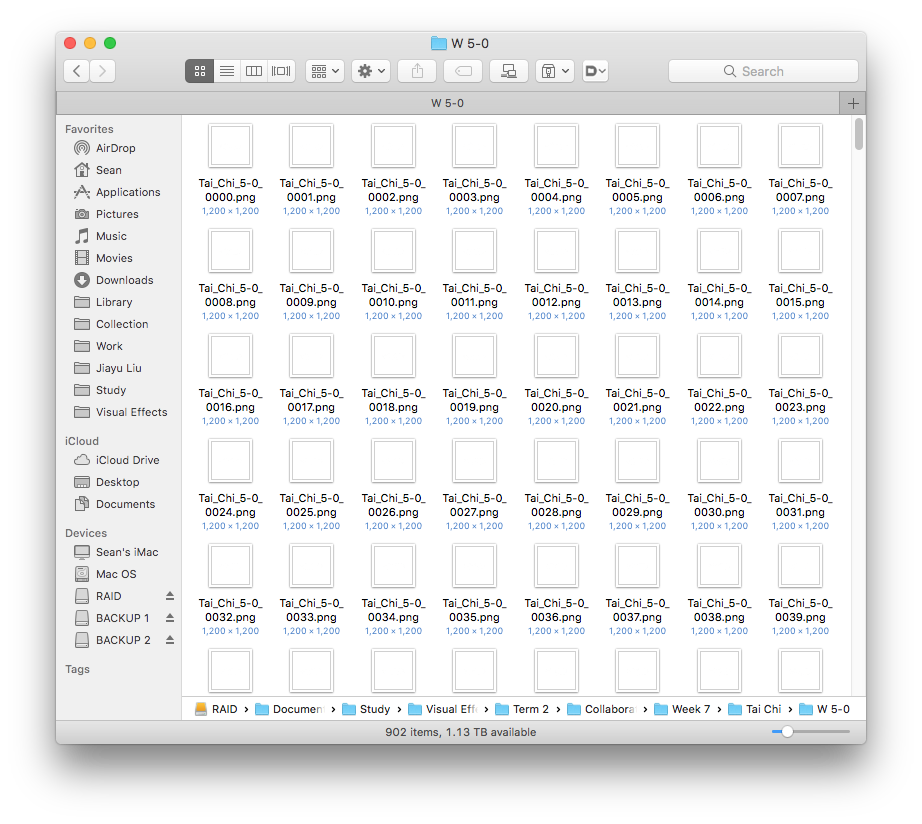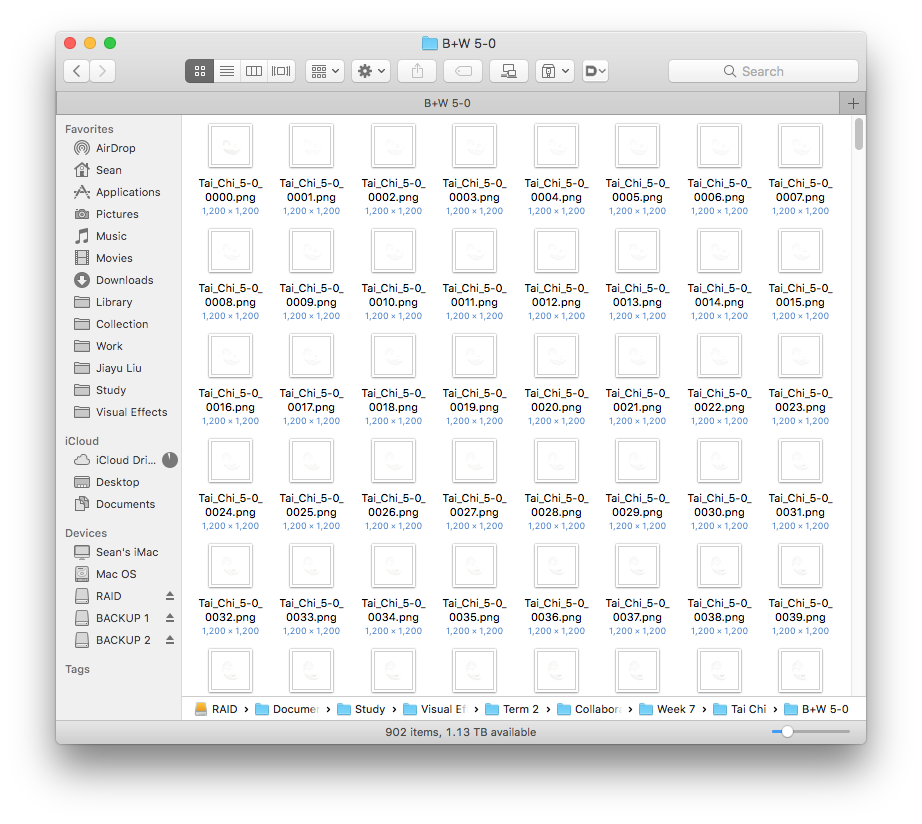樸 PU – Project Video (short version)
Standard length project video, including the core design concept of the project, AR animation system, exhibition space design
樸 PU – Project Video (full version)
Contains all complete AR animations of 5 elements
WOOD | FIRE | EARTH | METAL | WATER
樸 PU – VFX Breakdown Video
Includes all Tai Chi & Yin and Yang smoke particles, art gallery space, and compositing creative process and demo version
樸 PU – Presentation
Click to ZOOM and NAVIGATE
樸 PU – Bible Pitch
Click to ZOOM and NAVIGATE
樸 PU – AR Getting Started
1) Install the Artivive app.
2) Find five symbols artworks (below).
3) View the artwork through your mobile.
Artivive’s website: https://artivive.com
樸 PU – Project Management
In the first week of cooperation, our team first built a complete project collaboration platform. We efficiently used the school’s Microsoft Office 365 to establish a project team.
We choose Outlook, Planner, SharePoint three suite modules to start the follow-up project cooperation.
Weekly regular meetings and brainstorming are held on Teams. At the same time, we set up a group on WeChat as a supplementary instant messaging, and all communication documents in the chat group every day are archived in the project file library as soon as possible.
The Collaborative Unit Project Group has been made public, and anyone from school can search or open it for viewing (but not for editing).
The short link is: https://bit.ly/391oqUf
樸 PU – Project Planner
This is the project task planning board, which contains all task arrangements and records of all team members
The Project Planner has been made public, and anyone from school can search or open it for viewing (but not for editing).
The short link is: https://bit.ly/3vQ1z7T
樸 PU – Project Library
This is the project file library, which contains all the design files of all team members for 8 weeks
The Project Library has been made public, and anyone from school can search or open it for viewing (but not for editing).
The short link is: https://bit.ly/3f5LQM8
樸 PU – Conclusion and Reflection
Project Conclusion:
Our team consists of four UAL graduate students, they are Tianchenglong Yao from MA art direction; Dan Wu from MA animation; Zixiao Gong from MA Sound Arts, and me from MA Visual Effects. Our project name is 樸 (PU) which is an experimental animation project that uses AR(Augmented Reality )to show off Chinese philosophical concepts.
In the beginning, we first determined to display our work in the form of AR, we want to use AR technology to show things that we cannot perceive in the real world. But, what is the thing we want to show, this is the first challenge we encountered. After a week of online discussions, we had a breakthrough. We find a kind of shrimp called Oratosquilla oratoria and were inspired by it. This creature can see more colours than human beings, it let us rethink what the real world looks like? What’s the relationship between humanity itself and the world?
Because we all come from China, we have the same cultural background, we thought of the traditional Chinese philosophy—Tao, Taoism’s philosophical system is an invisible and imperceptible thing. Chinese Taoism includes Wuxing(Five phases ); yin and yang; Bagua; etc. Wuxing is a systematic concept in ancient Chinese philosophy and widely used in traditional Chinese medicine; physiognomy; divination and other fields. Wuxing is the five basic forms in the evolution of yin and yang: 木(Wood)火(Fire)土(Earth)金(Metal)水(Water). Ancient Chinese philosopher used the theory of Wuxing to explain the formation and mutual relations of all things in the world. In Wuxing theory, each phase represents different energies. Based on our cultural background and a large amount of research, we have designed five elements with different characteristics, energy movements and used AR form to let people feel and perceive those elements.
Project Reflection:
Well done: the selection and construction of the project collaboration platform, the management and arrangement of the project file asset library, the setting of project tasks and the control of time nodes, the selection and use of software, plug-ins and technical processes.
Poorly done: The project weekly diary did not synchronize the recording on time, the rendering did not estimate the accurate time, the shooting venue was not booked with the school in advance, and the 2D animation does not have an Alpha channel and is not considered for post-compositing.
VFX Conclusion:
As for the VFX design of the project, I think it can be divided into three parts to understand. The first part is the incorporeal body. This part is often the smoke, fog, gas, fire, water, light and other particulate matter in nature, that is, objects that we can see or feel, but cannot touch or hardly touch their specific surfaces. The second part is the entity. This part is often a hard surface in nature, that is, an object with mass that can be touched. The third part is the synthesis of multi-format and multi-type materials and shots and presents the reasonable spatial position, interaction relationship and time-based state of all objects.
Therefore, considering these three parts, you can quickly and accurately score all the VFX designs in the project into three categories. And each type of design and production can be disassembled and promoted with the same software technology and workflow.
In this collaborative project, the design and production of the yin and yang core belong to the first category, the design and production of the gallery space belong to the second category, and the final synthesis of 2D animation and 3D animation belongs to the third category.
Finally, the technical process of VFX design of the project is:
1) Yin and Yang smoke core is modelled by Cinema 4D and rotated animation, and then the density mode of TurbulenceFD is used to fill the geometry of Yin and Yang, and the shape of the simulated smoke is calculated by the CPU. At the same time, to ensure the randomness and suspension of the smoke, it is closed Gravity and wind fields also increase turbulence.
2) The gallery space is modelled by Cinema 4D and the camera roaming animation is performed. In setting the camera movement, the alignment to the Spline and the Target tags are used to realize the smooth movement of the camera’s circular path. The materials are all made of PBR, and the light sources are all area lights.
3) The rendering uses the GPU-based Octane renderer, the model is diffuse direct lighting, and the AI denoising function is turned on. The AI algorithm is used to complete the denoising under low sampling on the GPU, to achieve a shorter rendering time and comparison. High rendering quality. At the same time, use Cinema 4D’s Take technology and rendering queue technology to achieve batch rendering.
4) The synthesis of the animation of the 5 elements and the 3D rendering animation of the art gallery is completed in Adobe After Effects, and the tracking and compositing are completed using camera tracking and 3D layers. And through the combination of layer overlay mode (Screen, Colour Dodge), the black background of the element animation is removed and get transparent.
VFX Reflection:
Well done: Use the professional PBR material node system throughout the entire process, use the extremely efficient GPU rendering process (through the GeForce GTX 1080 TI graphics card in eGPU mode), and communicate with the developers in advance about the plugins and software based on Cinema 4D. Determine the student version and related costs.
Poorly done: The TurbulenceFD plug-in is not proficient enough, resulting in flaws in the rendering results of the sixth week and discarded, thereby increasing the time for the second optimization and adjustment. There is no advanced test to estimate the number of rendering samples of the Octane renderer. Excessive sampling leads to a long rendering time, so all rendering stops and restarts after 2 hours of rendering. In the beginning, the AI denoising function of the Octane renderer was not turned on, which made the rendered sequence a lot of noise. This cooperation project did not use Nuke and Maya to participate in the production, and the combined use of software can be added in the future. Part of the particles is because Houdini is not enough, so I have no confidence to use it to create smoke effects, which is a pity. Finally, there are still some excellent VFX technologies that do not have the time and energy to try and explore in the project.
Sound Conclusion & Reflection:
(The following part of the narrator is: Zixiao Gong from MA Sound Arts)
For the sound design aspect of the project. At the very beginning, I encountered a challenge, I didn’t have any ideas about sound design. These five elements are not five things that we can perceive in the real world, so I can’t just design the sound based on the name attributes of the five elements. So I started to check relevant information on the internet and books. Finally, I found that the Chinese pentatonic scale, Chinese medicine and some typical musical instruments are closely related to the Wuxing.
Firstly, the Chines pentatonic scale is the ancient tone of the Han nationality in China. They were marked with Chinese characters: 宫(Gong)商(Shang)角(Jue)徵(Zhi)羽(Yu). If they are arranged in pitch: C(do)D(re)E(mi)G(sol)A(la).
Secondly, according to the theory of Wuxing used in the Chinese medicine field, Chinese ancients analyzed the characteristics of the five elements and researched the attributes and relationships of the five internal organs of the human body.
Their corresponding relationship is:
Heart – Fire
Lung – Metal
Liver – Wood
Spleen – Earth
Kidney – Water
Thirdly, according to the earliest Chinese medical book《Huangdi Neijing》, ancient Chinese believed that music was closely related to the universe and the human body. They found that the Chinese pentatonic scale can correspond to the five internal organs of the human body, and playing these tones with different instruments can have a healing effect on the five internal organs. From this, we can calculate the corresponding relationship between the five pitches and five elements.
Their corresponding relationship is:
宫(C) – Spleen – Earth
商(D) – Lung – Metal
角(E) – Liver – Wood
徵(G) – Heart – Fire
羽(A) – Kidney – Water
With these investigations, I started to try to design these five tones and the corresponding instruments into my project.
First of all, all the elements were designed with a fixed sound, which was the sound at the beginning of the element video, but it was triggered by different pitches.
Earth:
宫(C) – Spleen – Earth
The characteristic of the Earth element is thick, it is the basis for the survival of all things.
So sounds designed for the Earth element were based on the C key, and the sound was mainly low frequency, and I added the tone of Morin khuur, which is an instrument corresponding to the Earth element.
Metal:
商(D) – Lung – Metal
The characteristic of the Metal element can be soft or hard.
Sounds designed for the Metal element were based on the D key. I designed many metallic sounds and added the tone of the chime.
Wood:
角(E) – Liver – Wood
The characteristic of the Wood element is growth and vitality.
Sounds designed for the Wood element were based on the E key. I designed some sounds with a sense of rising and added the tone of Wooden fish. For this element, I designed vocals, because the Wood element is the only element in the Wuxing that has a direct connection with life.
Fire:
徵(G) – Heart – Fire
The characteristic of the Fire element is rising and bright.
Sounds designed for the Fire element were based on the G key. I designed some high-frequency tones and added the sound of Pipa, and designed the low-frequency part with heartbeat samples.
Water:
羽(A) – Kidney – Water
The characteristic of the Water element is gentle and downward.
Sounds designed for the Water element were based on the A key. I designed many smooth and deep sounds and added the tones of the harp and guitar to show the Water element.
Finally, we designed five logos about the five elements and carved them out. Through AR technology, we hope that this work can enable more people to direct feel and understand Chinese traditional culture and find a harmonious lifestyle.
From the beginning to the end of this cooperation, we spent about eight weeks. It was an amazing experience. We have learned a lot and experienced the joy of cooperation.
樸 PU – Project Information
Title:
樸 (PU)| Augmented Reality Animation
Project Video Link:
https://vimeo.com/527553621 (short version)
https://vimeo.com/527553654 (full version)
VFX Breakdown Video Link:
Info:
Synopsis: This artwork uses AR (Augmented Reality)technique as an unnatural method to spy on the invisible Five elements of the Tao.
Credits:
Director: Tianchenglong Yao, Dan Wu
Animator: Dan Wu
3D/VFX Designer: Meng Lu
Sound: Zixiao Gong
Music: Zixiao Gong
Director of Photography: Tianchenglong Yao
Post-Production: Dan Wu
Digital Compositing: Meng Lu
Editor: Tianchenglong Yao
Actor: Dan Wu, Jia Tang
Thanks: Kim Noce, Nica Harrison, Ben Williams, Christos Sfetsios, LCC Relief Workshop
Biography:
Our team consists of four people, they are Tianchenglong Yao from MA art direction; Dan Wu from MA animation; Zixiao Gong from MA Sound Arts, and me from MA Visual Effects.
樸 (PU) is an experimental animation project that uses AR (Augmented Reality) to describe Chinese philosophical concepts. We were inspired by a mantis shrimp called oratosquilla oratoria. The shrimp can see more colours than humans. The shrimp lets us rethink what the real world looks like. What is the relationship between humanity and the world?The shrimp also reminds us of Taoism, a traditional Chinese philosophy that emphasizes living in harmony with Tao. Taoism denotes the principle that is the source, pattern, and substance of everything that exists.
Everything in the world has its way, and humans can not intervene. We want to use AR technique as an unnatural method to perceive the Tao’s invisible five elements. Wuxing is one of the Taoist’s theories, usually translated as Five Phases, is a fivefold conceptual scheme that many traditional Chinese fields used to explain a wide array of phenomena. Each phase represents different energies in Wuxing theory.
Based on our cultural background and a large amount of research, we have designed five elements with different characteristics, energy movements, sounds and used the AR form to let people feel and perceive those elements. We have completed all the animations and provided a display plan. We hope that our results will allow more people to understand traditional Chinese culture intuitively and find a way of living in harmony.
Everything in the world has its way, and humans can not intervene. We want to use AR technique as an unnatural method to perceive the Tao’s invisible five elements. Wuxing is one of the Taoist’s theories, usually translated as Five Phases, is a fivefold conceptual scheme that many traditional Chinese fields used to explain a wide array of phenomena. Each phase represents different energies in Wuxing theory.
Based on our cultural background and a large amount of research, we have designed five elements with different characteristics, energy movements, sounds and used the AR form to let people feel and perceive those elements. We have completed all the animations and provided a display plan. We hope that our results will allow more people to understand traditional Chinese culture intuitively and find a way of living in harmony.
Contact Details:
Tianchenglong Yao: t.yao0420191@arts.ac.uk
Dan Wu: d.wu0220192@arts.ac.uk
Meng Lu: m.lu0620192@arts.ac.uk
Zixiao Gong: z.gong0220201@arts.ac.uk
Technical Info:
Short Version Length: 01:31, Full Version Length: 04:17
Size: 1920×1080 HD 16:9 H.264
Sound: Stereo
Data statistics of VFX:
Gallery Still Frame Rendering: 6
Gallery Animation Rendering: 7
Particle Animation Rendering: 3
Average Rendering Time Per Animation Lens: 4 Hours
Total Rendering Time: 75 Hours
Total Animation Rendering Sequences: 3963
Total Design Project File Size: 45.94GB
Total Particle Calculation Cache File Size: 43.31GB























